Philips PUS8959, also known by other designations under the abbreviation PUS89 (depending on the retail network), is a model from the popular series The One. Its biggest standout feature is the Ambilight system, which continues to make a great impression. The three-sided backlighting adjusts to the image on the screen, making films, series or games literally extend beyond the edges of the TV. The One is also a good option for gamers. The 120 Hz panel and low input lag make games run smoothly, and the motion on screen is clear. We tested several dynamic titles on the console, and the TV handled them without any issues – no stuttering or delays. Additionally, support for HGiG allows for better rendering of HDR effects in games. This is a great solution if we care about matching the image with what the creators intended. The picture quality is good, particularly during the day. With a brightness level of 550 nits, The One performs well even in well-lit rooms, and Dolby Vision in HDR movies delivers vivid colours and sharp details. However, the ADS panel has its limitations – black in dark scenes more resembles a grey shade, which can be noticeable when watching in a darkened room. When we watched movies with the lights off, the lack of depth in the blacks was somewhat striking. The Titan OS operating system is something that still needs refinement. It’s fast, but the limited number of applications can be frustrating for those used to more extensive platforms like GoogleTV. In daily use of Netflix or YouTube, it works flawlessly, but if we're counting on more advanced features, the system may not meet expectations. Overall, the Philips The One is a good choice in its price range. The Ambilight system impresses and significantly enhances the viewing experience, especially in the evening. It’s also a solid option for gamers, thanks to the smooth image and low input lag. Although the black level isn't perfect, and the operating system needs improvement, the TV excels in everyday use. For fans of unique solutions like Ambilight, this is a proposal that definitely deserves attention.
- Matching (Score)
- Our verdict
- TV appearance
- Where to buy
- Contrast and black detail
- HDR effect quality
- Factory color reproduction
- Color reproduction after calibration
- Smoothness of tonal transitions
- Image scaling and smoothness of tonal transitions
- Blur and motion smoothness
- Console compatibility and gaming features
- Input lag
- Compatibility with PC
- Viewing angles
- TV efficiency during daytime
- Details about the matrix
- TV features
- Apps
- Playing files from USB
- Sound
Philips The One (PUS8959 / PUS8919 / PUS8909 / PUS8949 vs SAMSUNG QN80F
Direct compare
PUS8959 / PUS8919 / The One / PUS8909 / PUS8949
QN80F

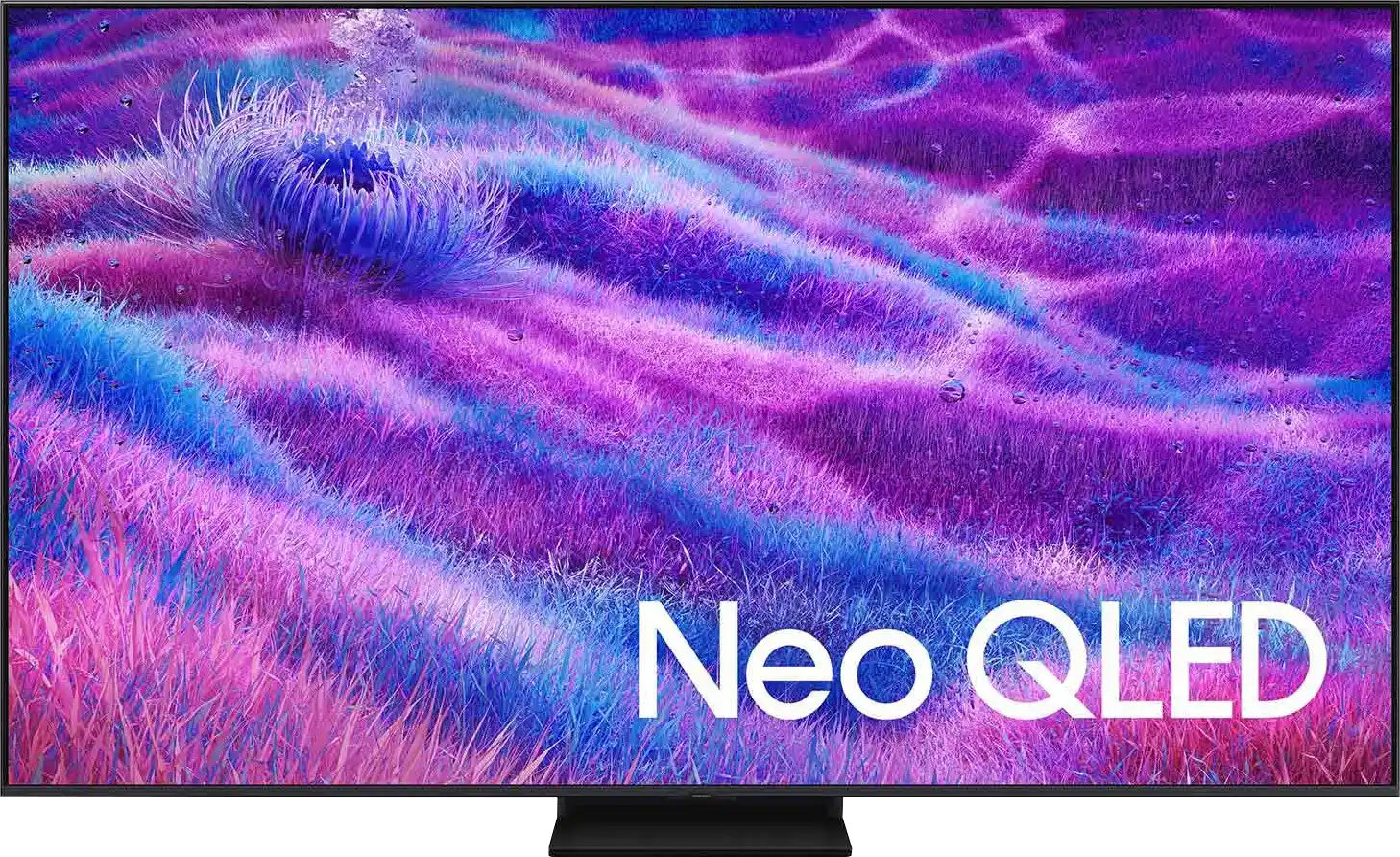
Panel type: LCD IPS
Resolution: 3840x2160
System: Titan OS
Model year: 2024
Complete the survey to find out the result

Panel type: LCD VA
Resolution: 3840x2160
System: Tizen
Model year: 2025
Complete the survey to find out the result

Overall rating
6.8
7.3
Movies and series in UHD quality
6.6
6.9
Classic TV, YouTube
6.3
6.8
Sports broadcasts (TV and apps)
7.2
6.7
Gaming on console
8.5
8.5
TV as a computer monitor
8.0
8.8
Watching in bright light
6.1
6.6
Utility functions
6.1
7.7
Apps
6.2
8.7
Sound quality
6.4
6.7
Complete the survey to find out what fits your preferences
Advantages
Ambilight System: Three-sided backlighting
120Hz Panel - smooth image
Extra features for gamers
Satisfactory brightness level that works well during the day
Wide viewing angles
Great black levels and contrast - VA panel combined with MINI-LED backlighting.
Excellent brightness - up to 1000 nits in HDR
Fast and responsive panel - 144 Hz
Robust support for gamers - 4xHDMI 2.1, VRR, ALLM, GameBar, Game Motion Plus
Very good usability in daylight
Advanced Tizen operating system
Easy to use
PiP function
Disadvantages
Poor black quality
Annoying "hybrid" remote
Titan OS: Still in development, with a limited number of apps and not very functional compared to more advanced platforms
No DTS format support – a limitation when connecting a home theatre system
No USB recording function
Relatively few dimming zones
Issues with the HGiG function (for gamers) – the update removed this option*
Our verdict
QN80F is the first in the history of Samsung's "eighty range" to feature Mini LED backlighting. And it does it really well. Although the number of dimming zones isn't staggering, the black levels are solid, and in combination with high brightness, it allows for a very decent picture in HDR content. Additionally, there's a 144 Hz panel that provides excellent motion fluidity, and the gaming features – VRR, ALLM, Game Motion Plus – make the QN80F an option truly designed for those gaming on consoles or PCs. The television operates quickly and responsively, and the Tizen system runs like lightning – whether you’re searching for apps or switching sources. Is there anything to nitpick? Of course, as always – there are shortcomings in the system (like USB recording), DTS support is absent, and Mini LED comes with its own limitations. But the QN80F is a fantastic everyday television – versatile, refined, and... with great price potential. Looking at the history of this series, we can expect that this "eighty" will still shake things up once it hits the first reasonable promotions. And then it could be virtually unbeatable at its price – especially if Samsung fixes the minor teething issues.
TV appearance




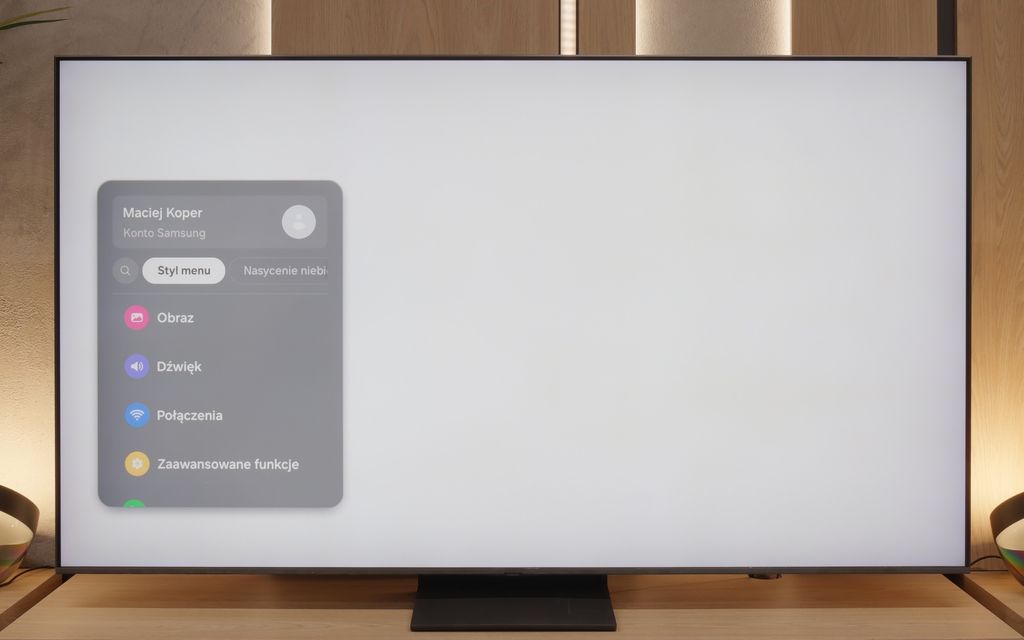
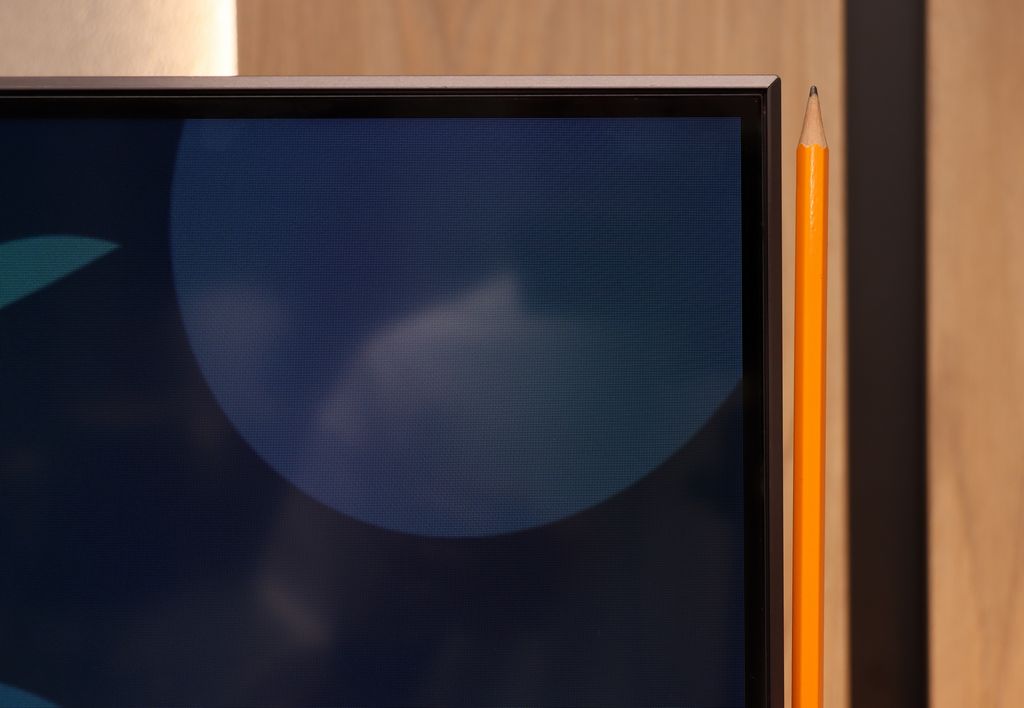
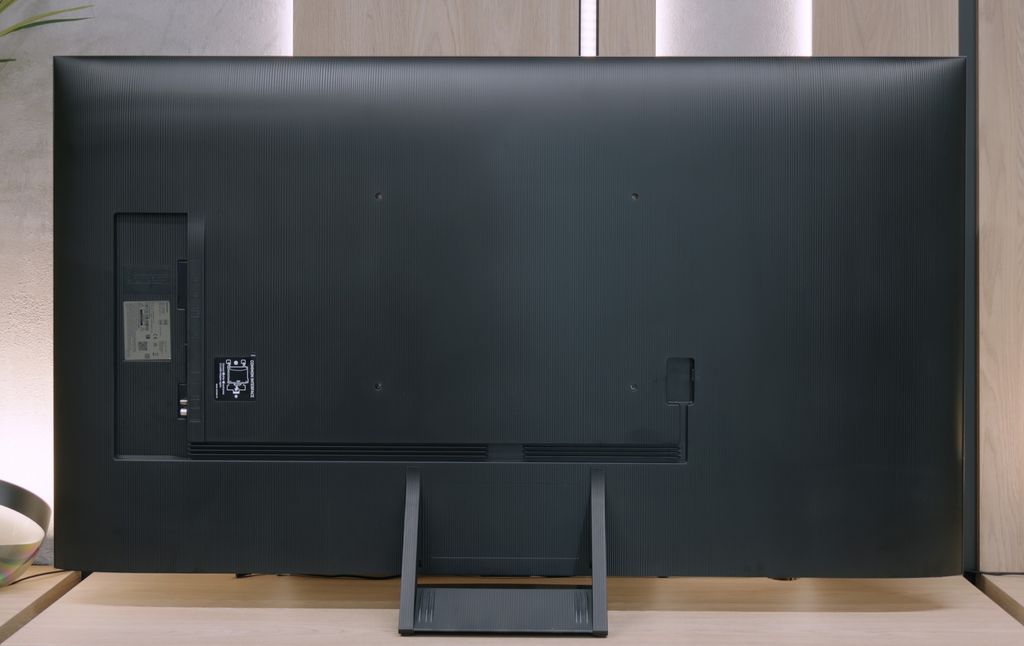
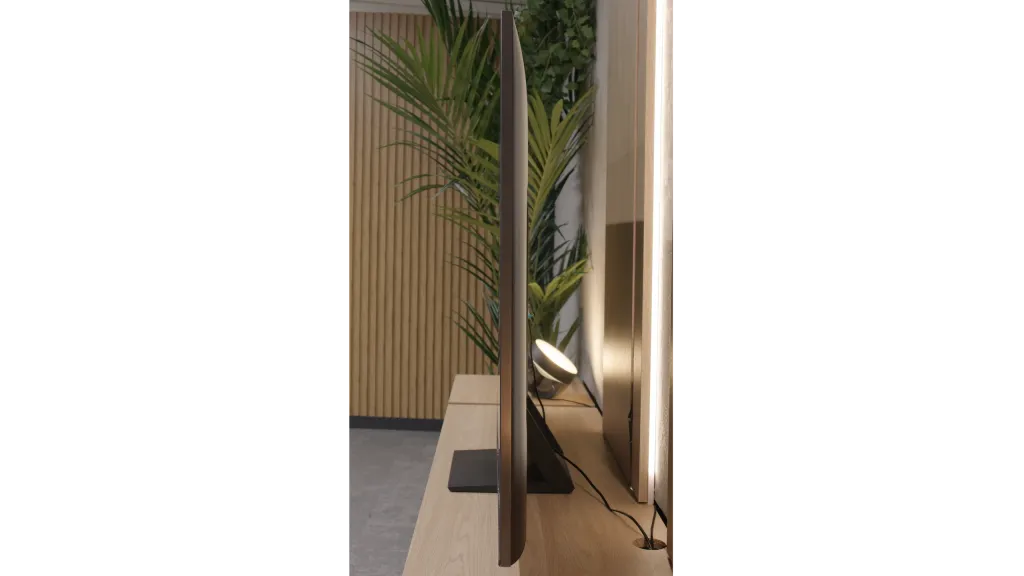
Where to buy
Contrast and black detail
4.3/10
6.8/10
Local dimming function: No
Local dimming function: Yes, number of zones: 88 (8 x 11)
Contrast:

Result
2,350:1

Result
2,400:1

Result
2,600:1

Result
2,550:1

Result
2,200:1

Result
34,100:1

Result
8,200:1

Result
32,500:1

Result
4,550:1

Result
3,800:1
Halo effect and black detail visibility:

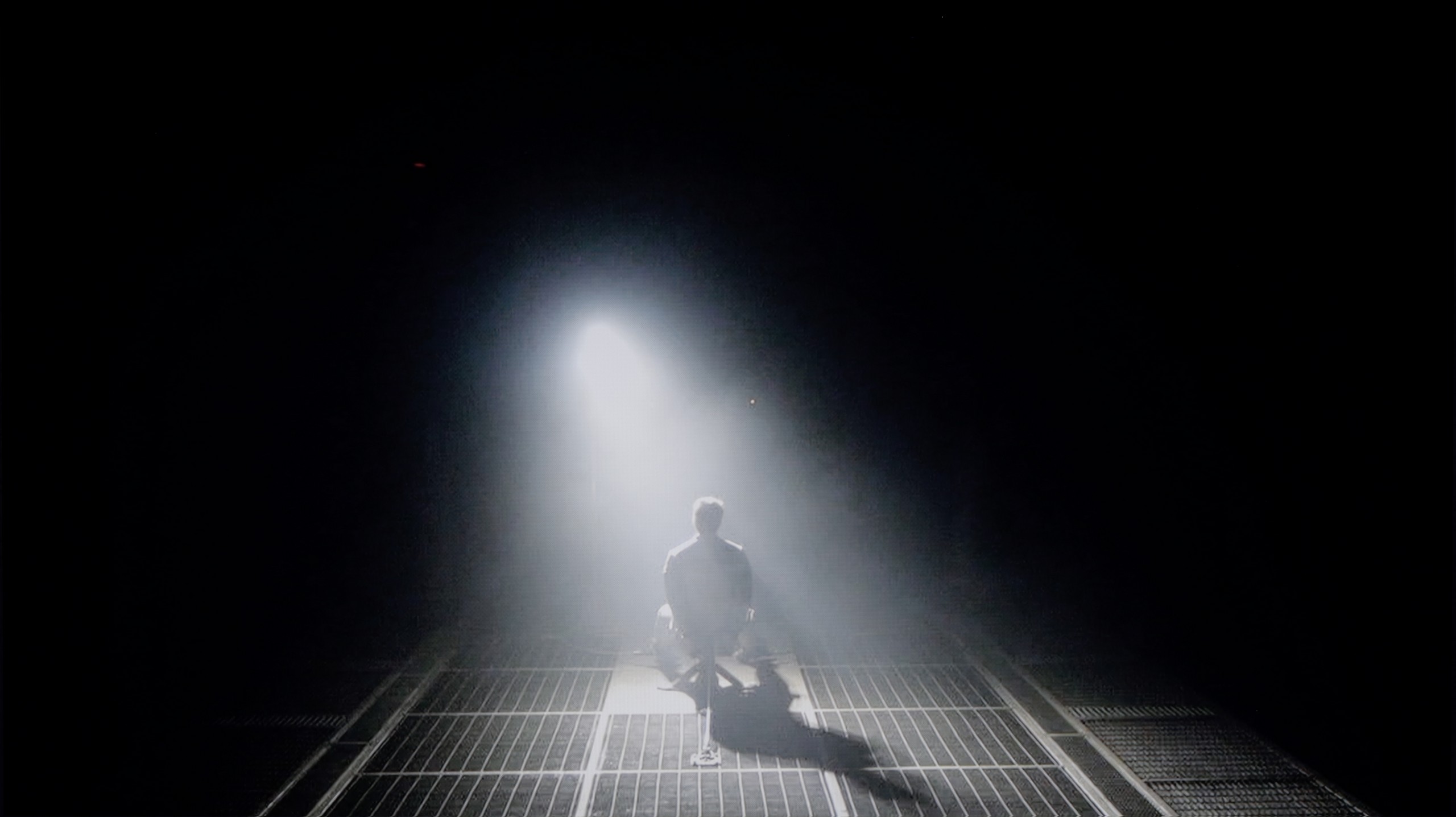
The television Philips PUS8959 is based on an ADS panel, which offers slightly different parameters compared to the popular VA panels. In the tested screens, the contrast was around 2000:1, making the black level far from ideal. ADS panels are known for their weaker contrast compared to VA panels, which in practice means that instead of deep black, we see more navy or grey shades. However, the ADS panel is still better than the standard IPS panel, which cannot achieve such a level of contrast. Additionally, the Philips PUS8959 is not equipped with local dimming technology, which could improve these parameters. The absence of this function exacerbates the effect of shallow blacks, particularly noticeable in dark scenes, such as those in the movie "Sicario 2". Instead of intense black, the screen generates a silvery glow, which can be bothersome, especially when watching in darker conditions. All of this leads to a visual experience that lacks depth, and details in dark scenes are not as well visible as one might expect from higher-end screens. Despite the lack of local dimming, the television is equipped with what is known as Global Dimming. The television is capable of completely dimming the panel to achieve higher contrast, but at the cost of details that may blend together, for example, lights in the test screen from the movie Oblivion. It’s worth noting that the model we received for testing has quite noticeable blobs resulting from uneven backlighting, although this isn't a dealbreaker; one should consider when purchasing that we might receive a similar piece.
QN80F is a representative of the Neo QLED series, meaning it is a television with Mini LED backlighting. Unlike its cheaper cousin, the QN70F model, the diodes here are placed directly behind the panel (instead of at the edges), which gives a solid advantage from the start when it comes to contrast control. In the 65-inch variant we tested, we counted 88 dimming zones – a result that may not be very impressive, but as it turned out, sufficient to achieve quite decent results.
In tests based on scenes from films such as Oblivion or The Meg, the QN80F performed well – blacks were deep, and the overall image consistency was eye-catching. However, in more demanding moments (e.g., scenes with a large number of bright details on a dark background), a halo effect appeared. This is where the limitation of the number of zones comes into play – bright elements could bleed around, and some details in dark areas became less visible. In one scene with a helicopter (The Meg), we even noticed slight brightness flickering, as if the television was trying its best to maintain visibility of the details at the expense of black depth.
However, these are not issues exclusive to this model – the halo effect or contrast drops in very complex scenes are something that most Mini LED televisions struggle with, even the more expensive ones. In its class, the QN80F still performs positively and offers noticeably better contrast than the QN70F model with edge lighting. For most users, this will be a level more than sufficient – although not perfect.
HDR effect quality
5.9/10
5.8/10
Luminance measurements in HDR:

Result
501 nit

Result
514 nit

Result
553 nit

Result
544 nit

Result
569 nit

Result
799 nit

Result
533 nit

Result
717 nit

Result
245 nit

Result
656 nit
Scene from the movie “Pan” (about 2800 nits)


Scene from the movie “Billy Lynn” (about 1100 nits)

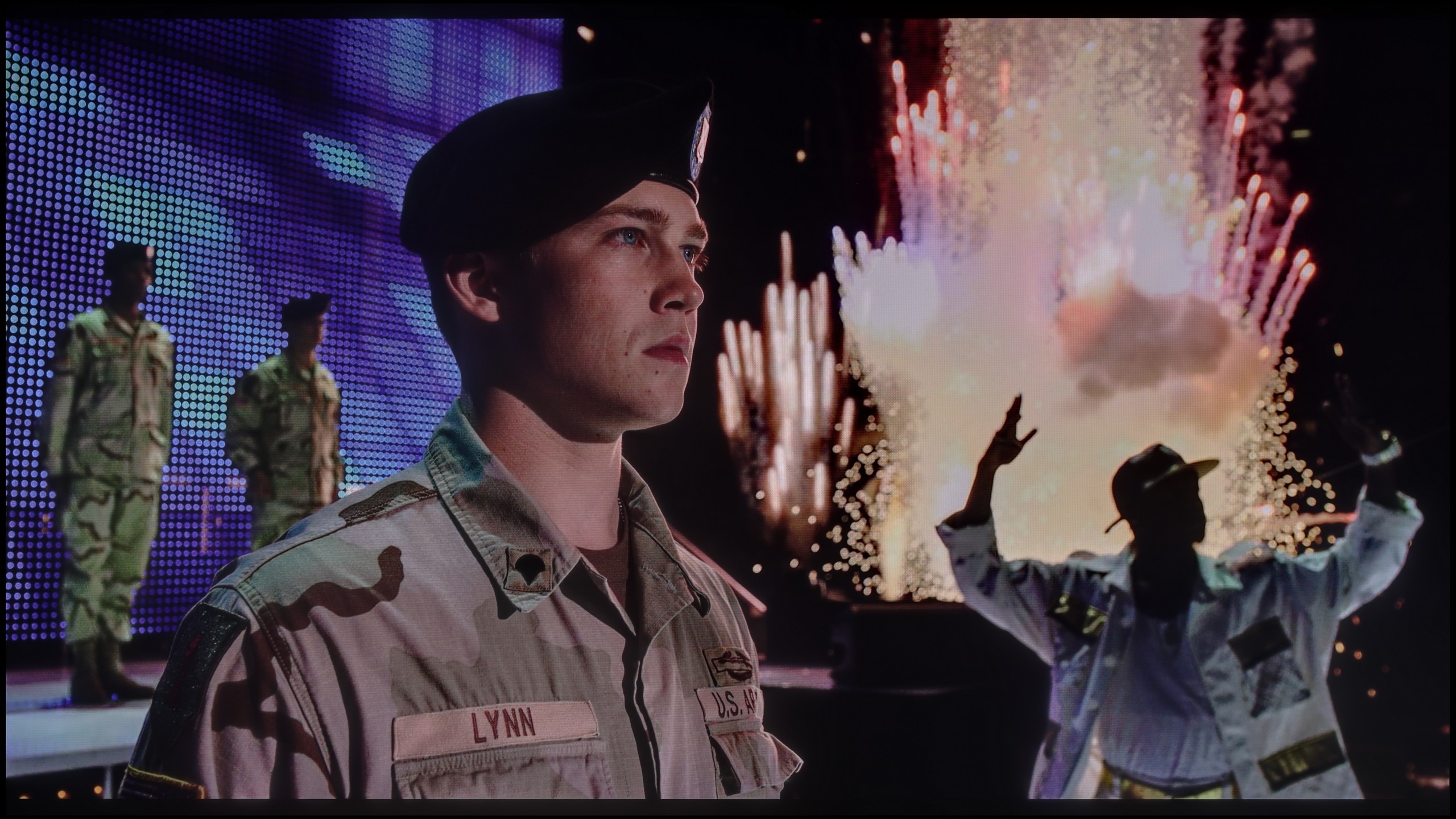
Static HDR10


Dynamic: Dolby Vision
Dynamic: HDR10+


HDR luminance chart:
SAMSUNG QN80F
HDR luminance
Philips The One (PUS8959 / PUS8919 / PUS8909 / PUS8949
HDR luminance
The luminance graph for Philips PUS8959 shows that the television can achieve around 550 nits of brightness, which can be considered a satisfactory level. Such brightness allows you to feel the effects of HDR, which stand out particularly in more demanding scenes. In the tested patterns, the television performed quite well, even in challenging sequences like those from "Sicario 2". Due to the lack of local dimming, the television does not dim small bright elements, and they shine at the full "power" of the television but at the cost of silvery blacks, which we mentioned in the paragraph about black levels. It’s also worth praising Philips PUS8959 for its good coverage of the DCI-P3 colour palette, which is around 94.5%. This ensures that the colours are vivid and close to the creators' intentions, which further enhances the quality of HDR effects and the experience of watching high dynamic range content.
QN80F is quite a bright screen – in synthetic tests, it reached nearly 1000 nits, which allows for reasonable expectations of HDR content. And indeed, in many scenes, the TV can truly shine. Sequences with a lot of light – like shots from the movie Life of Pi or wide, bright surfaces in The Meg – look impressive. Brightness stays around 700 nits, which provides a solid effect, enough to feel the true "HDR magic." Unfortunately, not every scene looks this good. In content with small, bright details on a dark background, like in Sicario 2, the TV can struggle – it can significantly dim individual elements, sometimes to the point where they disappear from the image. This is a result of the limited number of dimming zones, forcing the device into compromises: either stick to inky blacks or sacrifice some detail. QN80F usually chooses the former. As a consolation, it offers quite decent coverage of a wide color palette – DCI-P3 at 93%. It's not the highest score on the market, but it's more than enough for most content on streaming platforms.
Factory color reproduction
4.1/10
6/10


Factory Mode
After calibration


Factory Mode
After calibration
The television Philips PUS8959 has been tested in the best, theoretically most precise picture mode – Filmmaker. Although the name suggests film quality, it unfortunately falls short of perfection. The biggest issue in this mode is the white balance, both in HD and 4K content. It is characterised by a significant dominance of the red colour and drops in the green levels, resulting in unnatural colour reproduction. For example, white elements of the image have a noticeable pink hue, and the green is less intense, which diminishes the overall naturalness and colour balance. The ColorChecker test confirms these errors – it is clearly visible how the colour samples "deviate" from the proper values, which can best be observed on the sample squares that should precisely reproduce the colours. The lack of accuracy in this regard affects the realism and fidelity of the image, which is particularly undesirable in Filmmaker mode.
As for the brightness characteristics, the gamma graph resembles a roller coaster – with small elements displayed on the screen, the brightness is excessive, causing details to become overly exposed. Conversely, at higher gamma values, the image loses contrast and becomes too dark, making the whole appear lacking in dynamism. Similar problems can be observed in the EOTF characteristics – the television is unable to accurately reproduce the brightness levels, negatively impacting the overall picture quality.
We always test TVs in the best available factory mode – for the Samsung QN80F, this is the Filmmaker mode, and indeed, it provides the settings closest to the creators' intentions. However, this doesn’t mean everything looks perfect. In SDR content, the biggest issue was an unbalanced white balance – slight deficiencies in green and a noticeable excess of red led to noticeable colour errors, and one could say the screen had a pinkish hue. This was clearly visible in the colour checker test, where colours “escaped” outside their target fields – to such an extent that a sensitive viewer's eye could catch it even without the help of a meter.
In HDR content, the white balance was much better, but another issue arose – brightness management. The EOTF curve caused an overly bright image most of the time, which affected the perception of contrast and made the screen slightly “flicker” during dynamic changes in light. We’ve already discussed this in the paragraphs about black levels and HDR. Fortunately, Samsung offers users plenty of options. The QN80F features a rich set of calibration options, including a 20-point white balance – which is why we decided to check what this TV is really capable of after a proper calibration.
Color reproduction after calibration
8.1/10
8.3/10

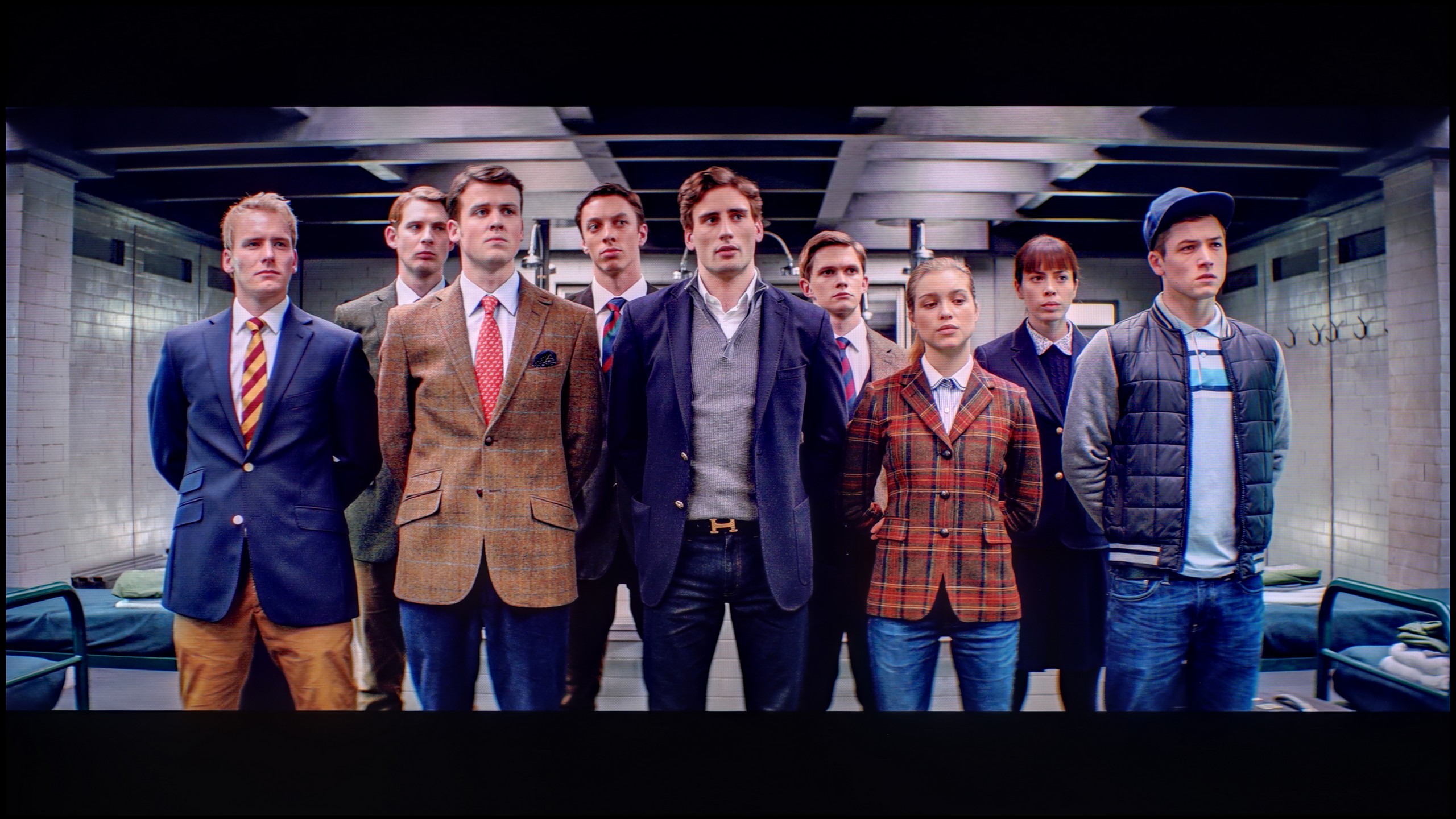

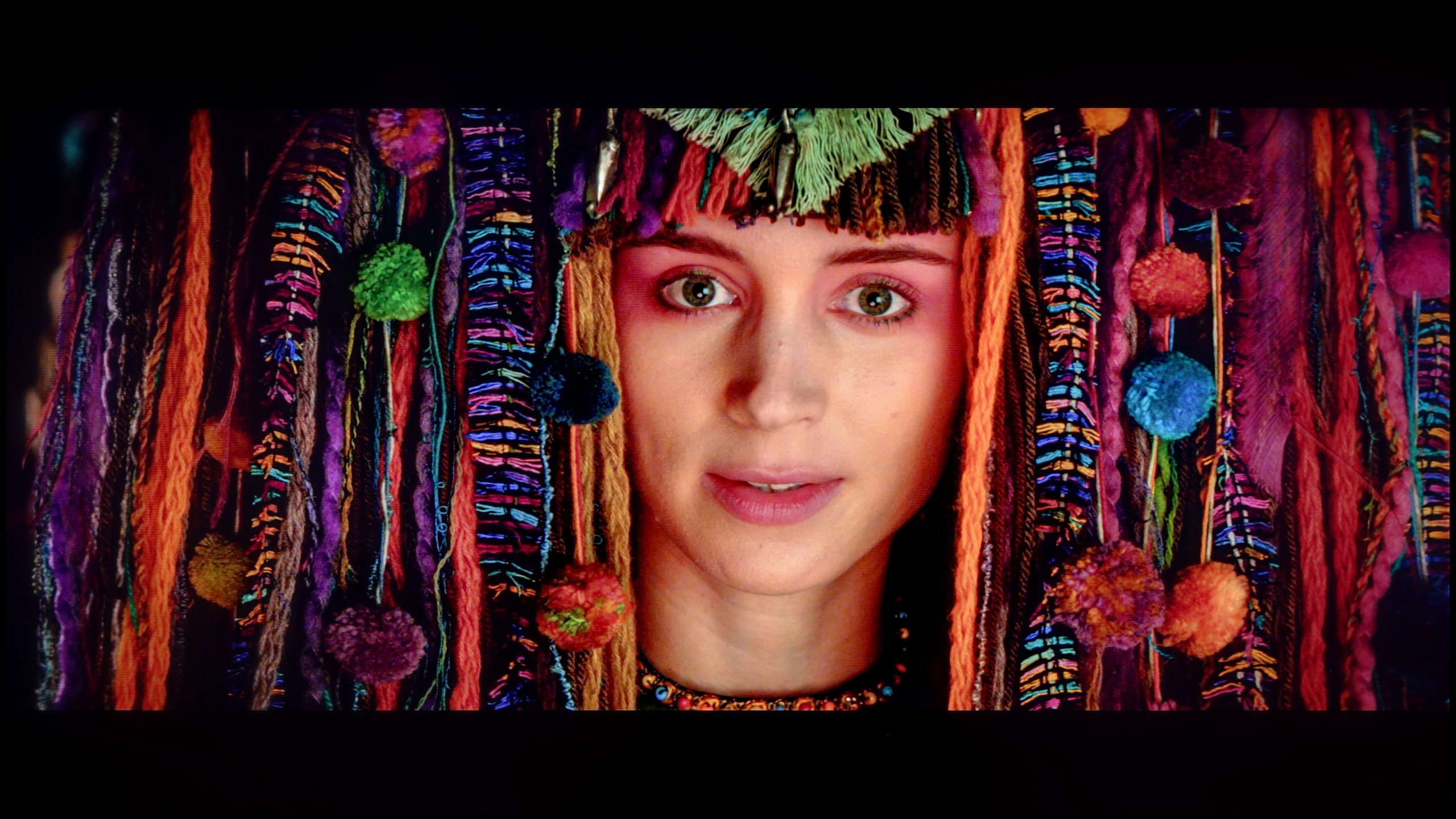
After calibration, the Philips PUS8959 shows a significant improvement in colour reproduction, especially in HD content. The white balance is exceptionally even, and the Delta E error values are below 1, which can be regarded as an outstanding result. Additionally, the gamma, which affects brightness in lower quality materials, performs very well, maintaining a stable level at 2.4, leading to an appropriate balance between bright and dark areas of the image.
When it comes to 4K HDR materials, there is also a noticeable improvement. The white balance, although not as perfect as in HD content, no longer suffers from excessive red exposure, making the image appear more natural and harmonious. Unfortunately, regarding the EOTF characteristic, it’s difficult to speak of any significant improvement, which stems from the structural limitations of the television that prevent substantial enhancement in this aspect.
Nevertheless, overall, it looks much better after calibration, making the Philips PUS8959 one of those televisions where it's truly worth investing time in precise calibration to achieve satisfactory image quality.
After conducting a thorough calibration, it was possible to bring most image parameters to a really good level. The white balance in both SDR and HDR presents itself almost perfectly – the image is natural, neutral, and free from the previously noticeable redness. Colours have gained depth, and the overall visual experience has become more pleasant and cohesive. It was also possible to partially manage brightness, which in the factory version could cause issues. The EOTF chart shows that the television performs much better with brightness after calibration – there is no longer excessive dimming of certain elements. In films, it can still be noticed that the QN80F has a tendency to slightly brighten the smallest bright details – this is already a consequence of the device's construction and the limited number of dimming zones. In short: not everything can be overcome, but what was possible has been improved. After calibration, the QN80F makes a really good impression, looking simply more mature and professional.
Smoothness of tonal transitions
8.9/10
9/10





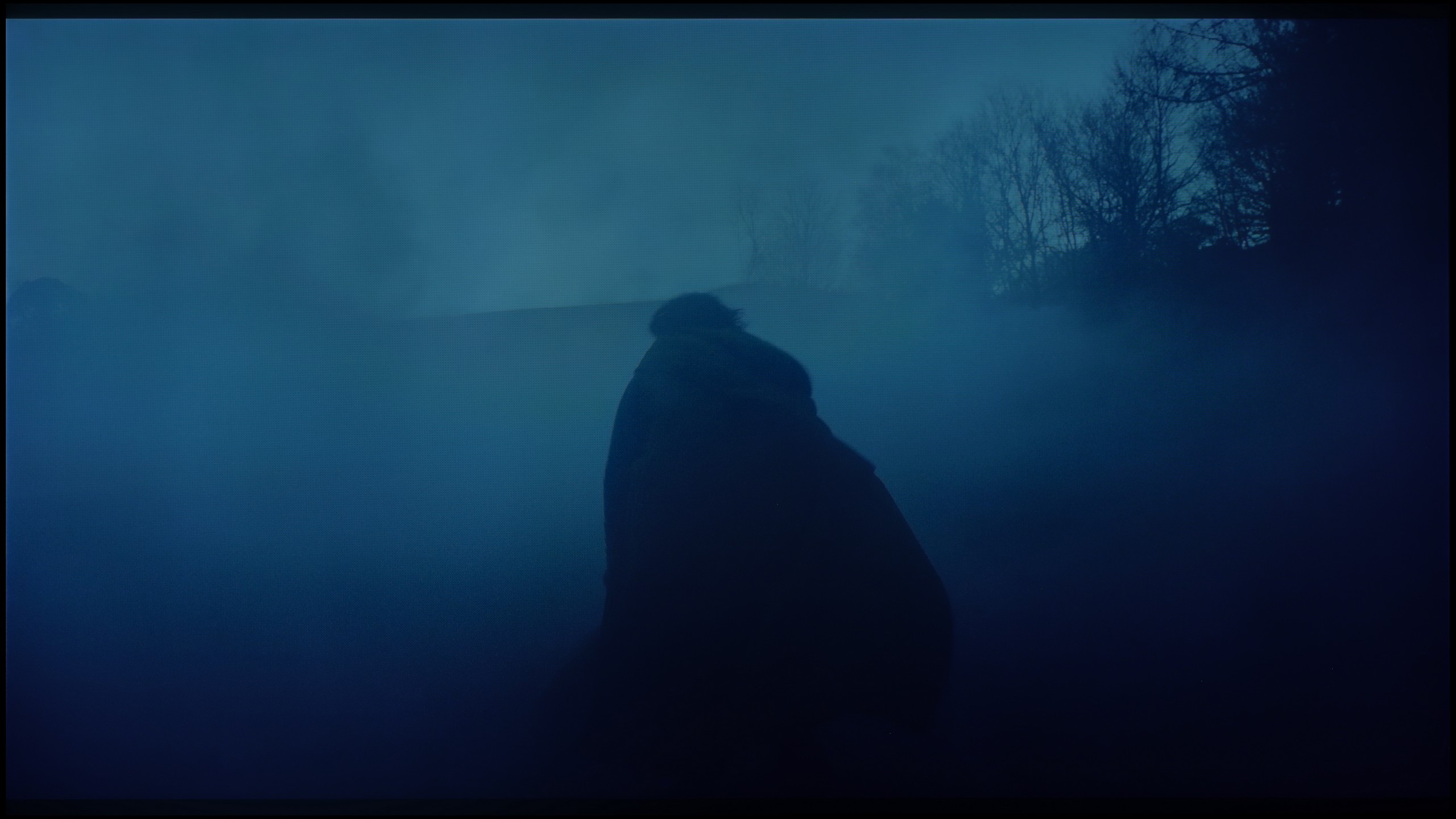

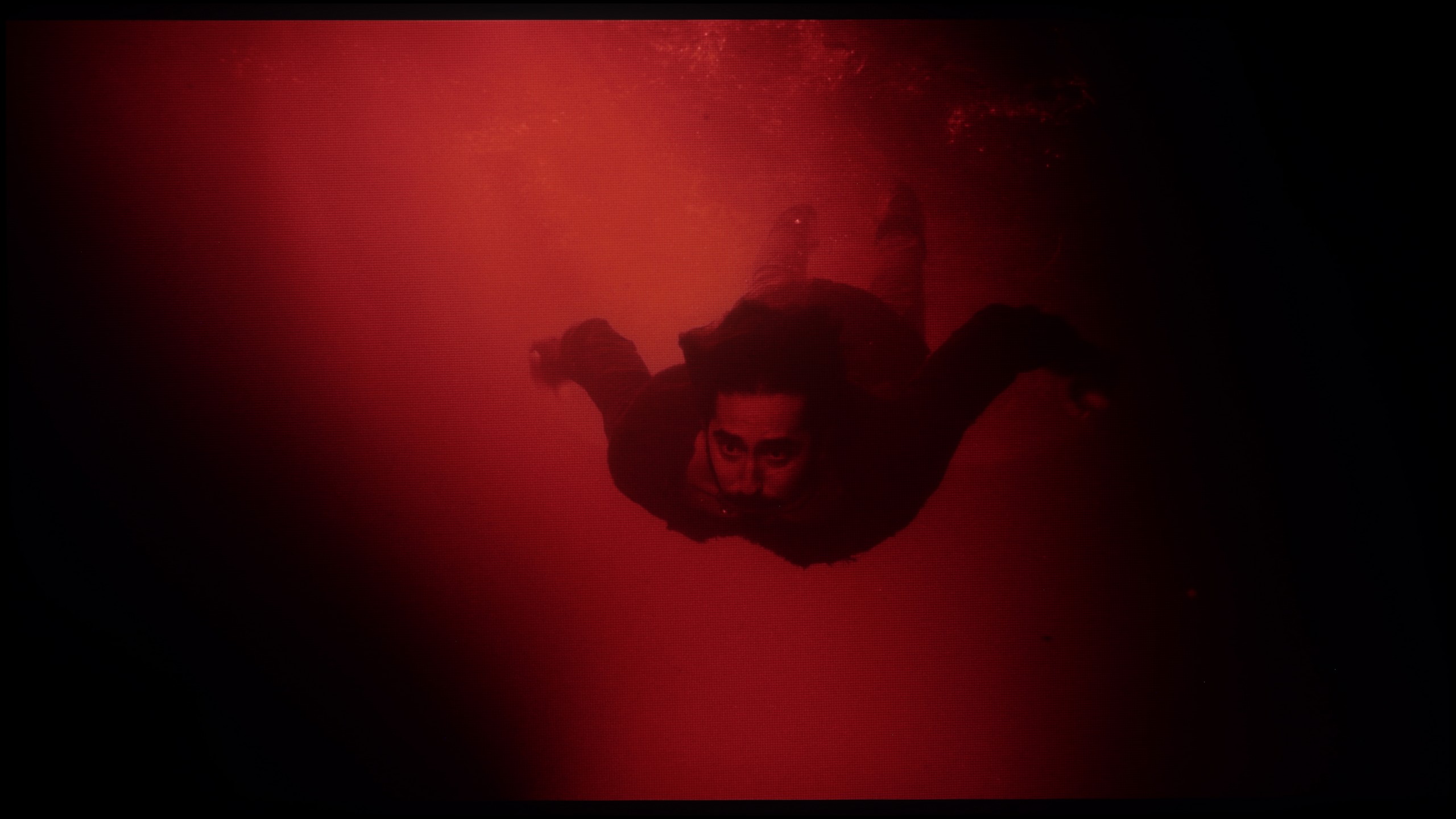




The gradation on the Philips PUS8959 television looks very good, offering smooth tonal transitions in most scenes. Occasionally, minor issues can be detected, especially in transitions between certain colours, where subtle inconsistencies are noticeable. However, these imperfections are subtle enough that they do not significantly impact the overall viewing experience and can be considered completely acceptable. In everyday use, the television provides good enough gradation quality to satisfy even more demanding users, maintaining the naturalness of the image and a lack of glaring tonal distortions.
In this regard, the QN80F really delivers. Transitions between colours are smooth, nothing tears, and there are no annoying bands in the sky or strange spots in the shadows. Movie scenes in darker tones performed particularly well – and that's where most televisions start to struggle. If you really focus, you might notice slight banding in the brightest areas, but that's really stretching it. In everyday viewing, no one should have a problem with this. To put it simply: the tonal transitions are so good that you can forget about them – and just enjoy the movie.
Image scaling and smoothness of tonal transitions
6.5/10
7/10
Smooth transition function

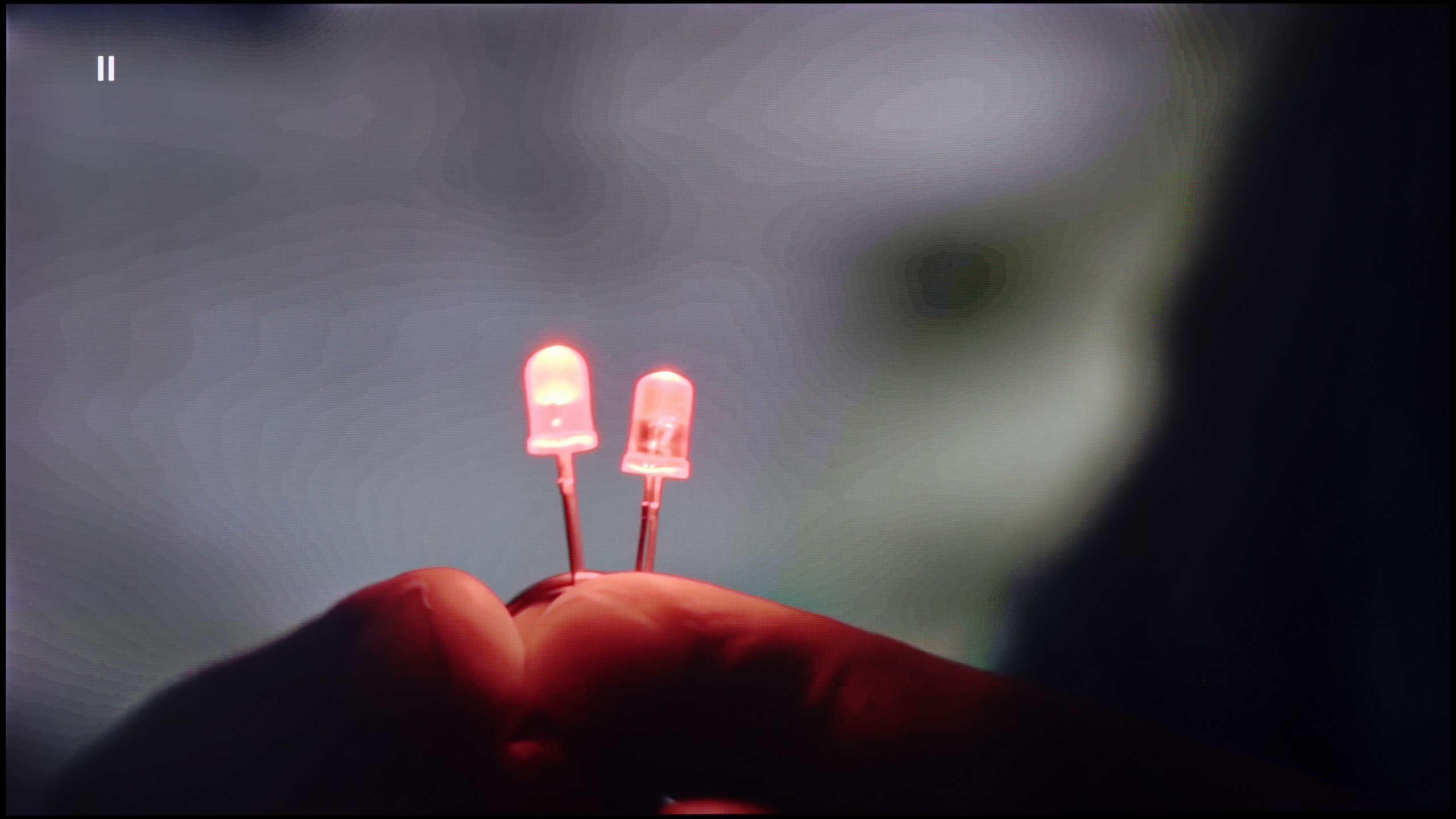
Image without overscan on the SD signal


When it comes to smoothing tonal transitions, the "Distortion Reduction" function in the minimum position performs quite well, effectively smoothing tonal transitions without excessive impact on other elements of the image. In testing, I did not notice that the reduction negatively affected the structure of the image, such as film grain or details of objects – everything remains in its place, which is a big plus for users who value the natural look of film material.
As for digital processing, the image looks pretty good, although it features very softened contours, giving it an almost "leafy" character. This effect may evoke mixed feelings – some users will appreciate the fluidity and delicacy of this type of presentation, while others may find it too gentle, losing detail. It is a matter of individual preference, but it must be admitted that Philips PUS8959 provides quite subtle yet effective tools for improving tonal transitions without excessive interference with the natural character of the image.
If you notice strange colour transitions or unwanted artefacts while watching lower quality materials – for example from YouTube – it's worth checking the settings and enabling the noise reduction feature. In our opinion, the best setting is at the 'medium' level – it effectively smooths out problematic colour transitions without overly blurring the entire image. However, it's important to know one thing: this option tends to remove film grain. If someone values preserving that effect (e.g., in older films), it's better to simply turn it off – regardless of the level, the grain always disappears.
Regarding resolution scaling (also known as upscaling), Samsung – as usual – performs very well in this area. The QN80F doesn't quite match the top models costing tens of thousands, but for its price class, it performs impressively. Materials of very poor quality (e.g., from SD television or older video files) are noticeably improved and look surprisingly decent. The only noticeable downside is the typical Samsung issue with overscan – which is a slight cropping of the image edges at very low resolutions, such as 576p.
Blur and motion smoothness
8/10
7.5/10

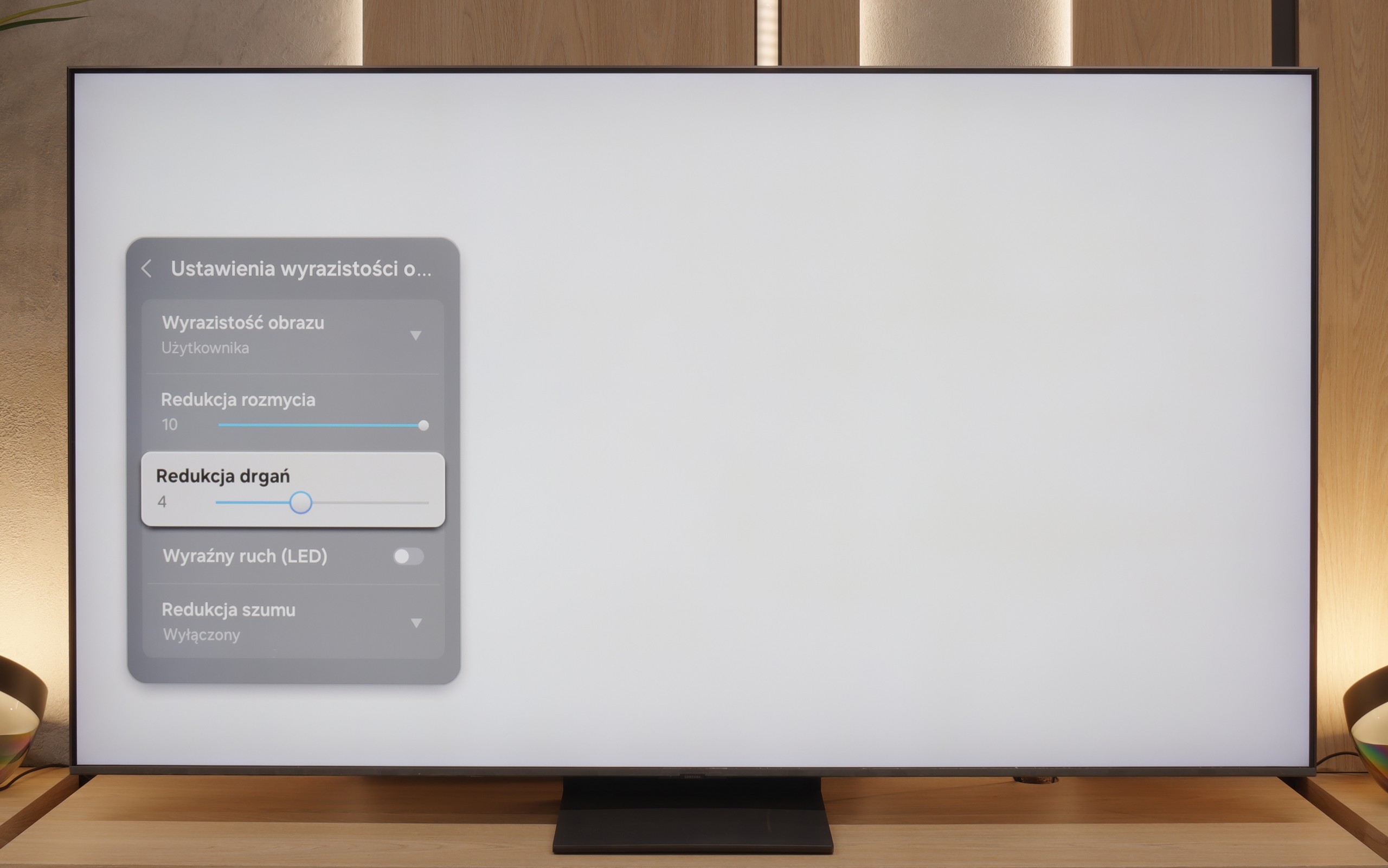
Blur (native resolution, maximum refresh rate):



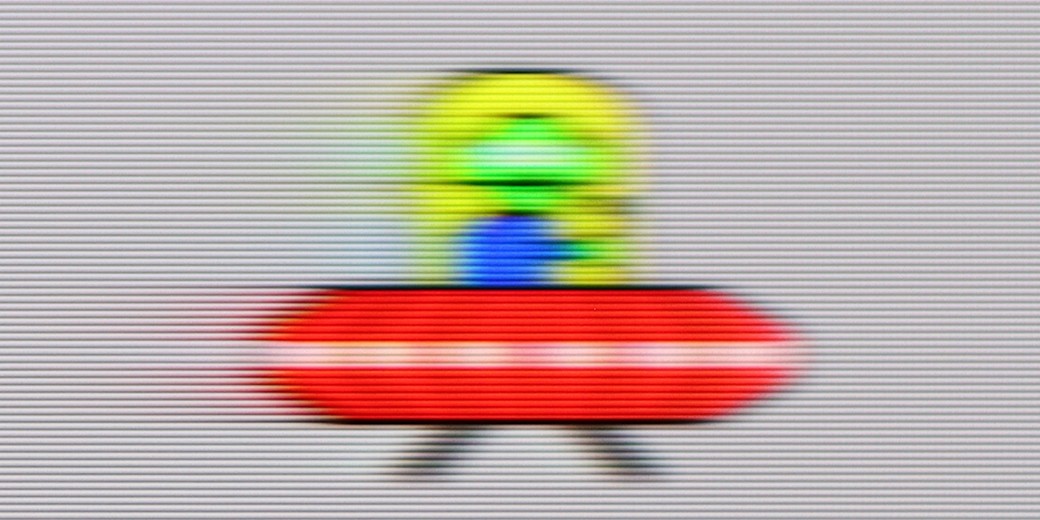
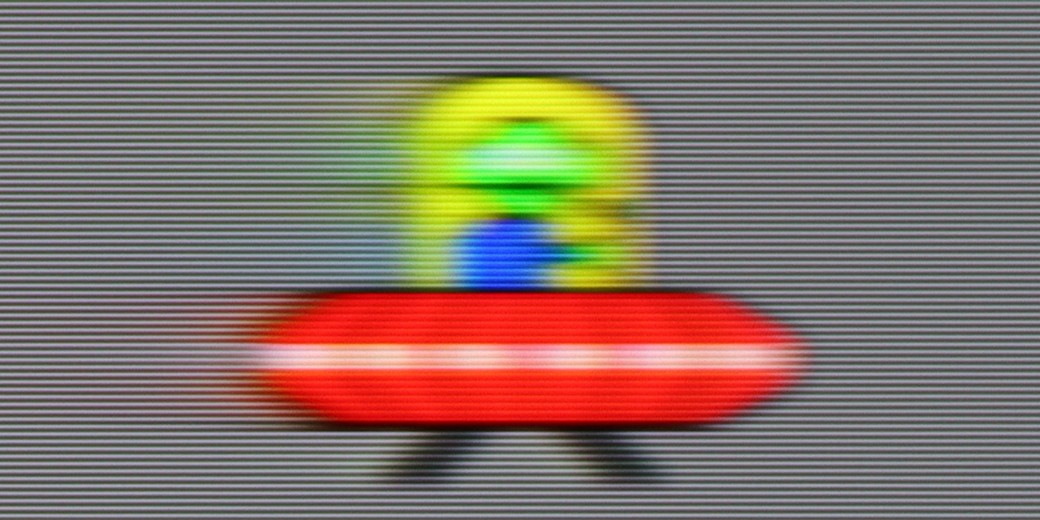
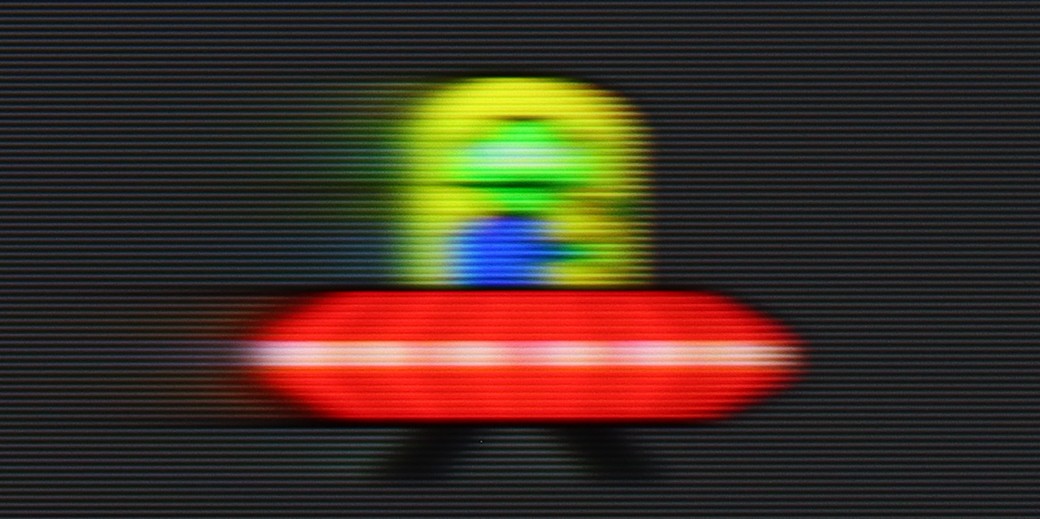
Blur (BFI function enabled):
Image flickers in this mode

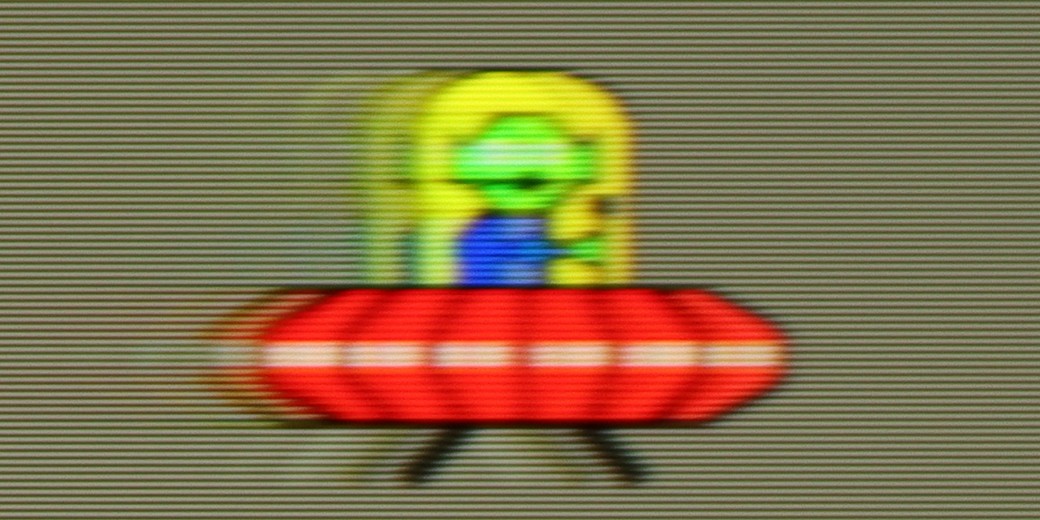
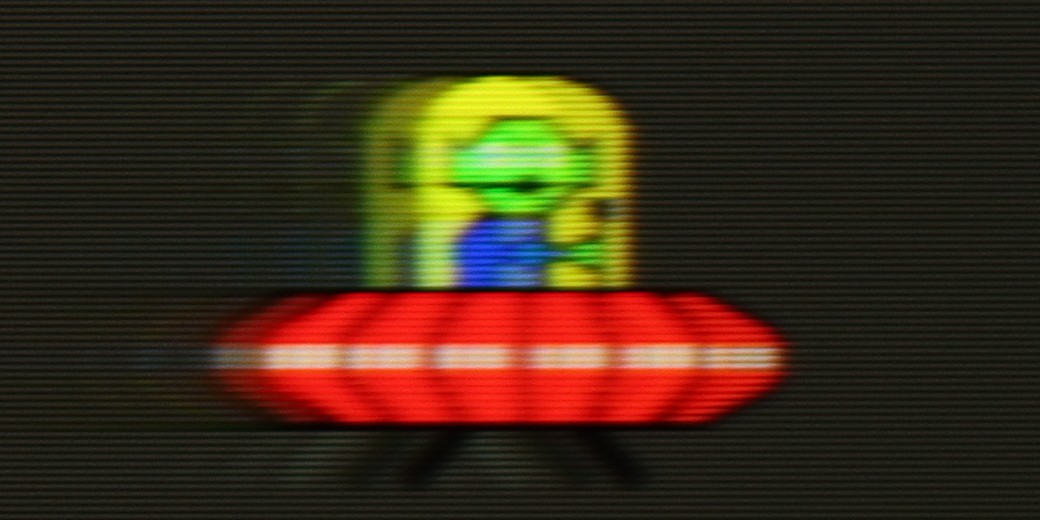
Philips PUS8959 TV is equipped with a 120 Hz panel, which should satisfy more demanding users, especially those who love watching dynamic sports broadcasts or playing games. Such a high refresh rate allows for significantly smoother images, being a key aspect during dynamic scenes and fast actions.
For those who prefer watching movies, the TV offers an additional motion smoother that allows adjustment of the frame rate according to personal preferences. The Philips PUS8959 features a 10-step adjustment for functions called "Smoothness" and "Motion Blur Reduction". The "Smoothness" function increases the number of frames through interpolation, making movement on the screen smoother, reminiscent of the so-called "soap opera effect". Meanwhile, "Motion Blur Reduction" focuses on minimising streaking and improving motion clarity, which is particularly noticeable in dynamic sequences such as action scenes or fast sports shots.
QN80F is truly a “fast” TV. The panel used offers a refresh rate of up to 144 Hz, which in practice means that the screen keeps up with the action – whether we’re watching a movie, playing games, or browsing dynamic content online. The image doesn’t stutter, isn’t overly blurred, and everything simply looks smooth and pleasing to the eye. Of course, the manufacturer hasn’t forgotten about cinema fans – in the settings, we find an option to adjust motion smoothness, allowing us to tailor the effect to our own preferences. You can leave a more “frame-y” look (for those who enjoy the classic film vibe) or crank up the smoothness to a higher level to achieve a theatrical smoothing effect. Importantly, the choice is ours. Watching movies and playing on the QN80F is just plain fun.
Console compatibility and gaming features
9.8/10
8.2/10
- ALLM
- VRR
- VRR range48 - 144Hz48 - 144Hz
- Dolby Vision Game Mode
- Correct implementation of HGIG
- 1080p@120Hz
- 1440p@120Hz
- 4K@120Hz
- Game bar

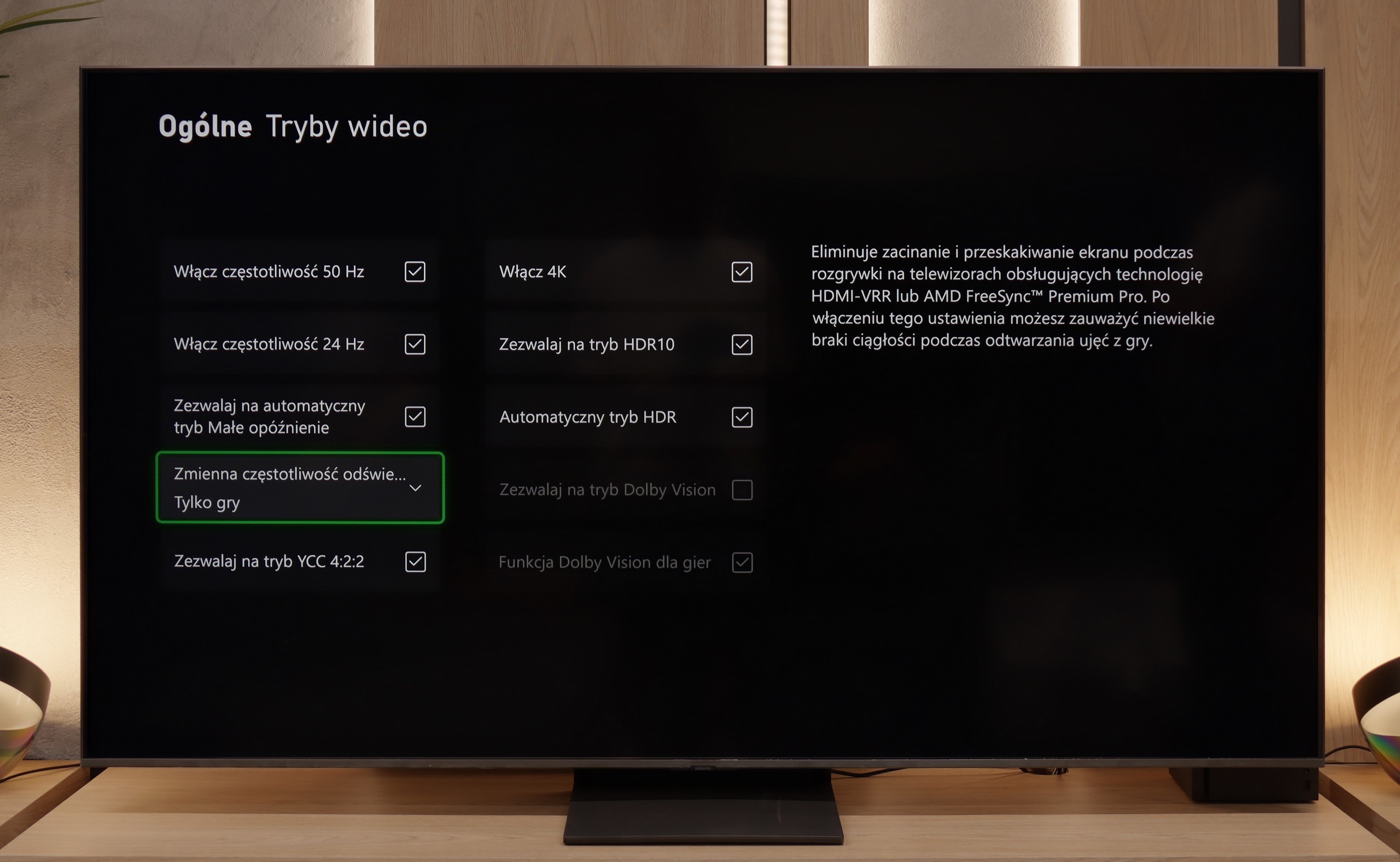

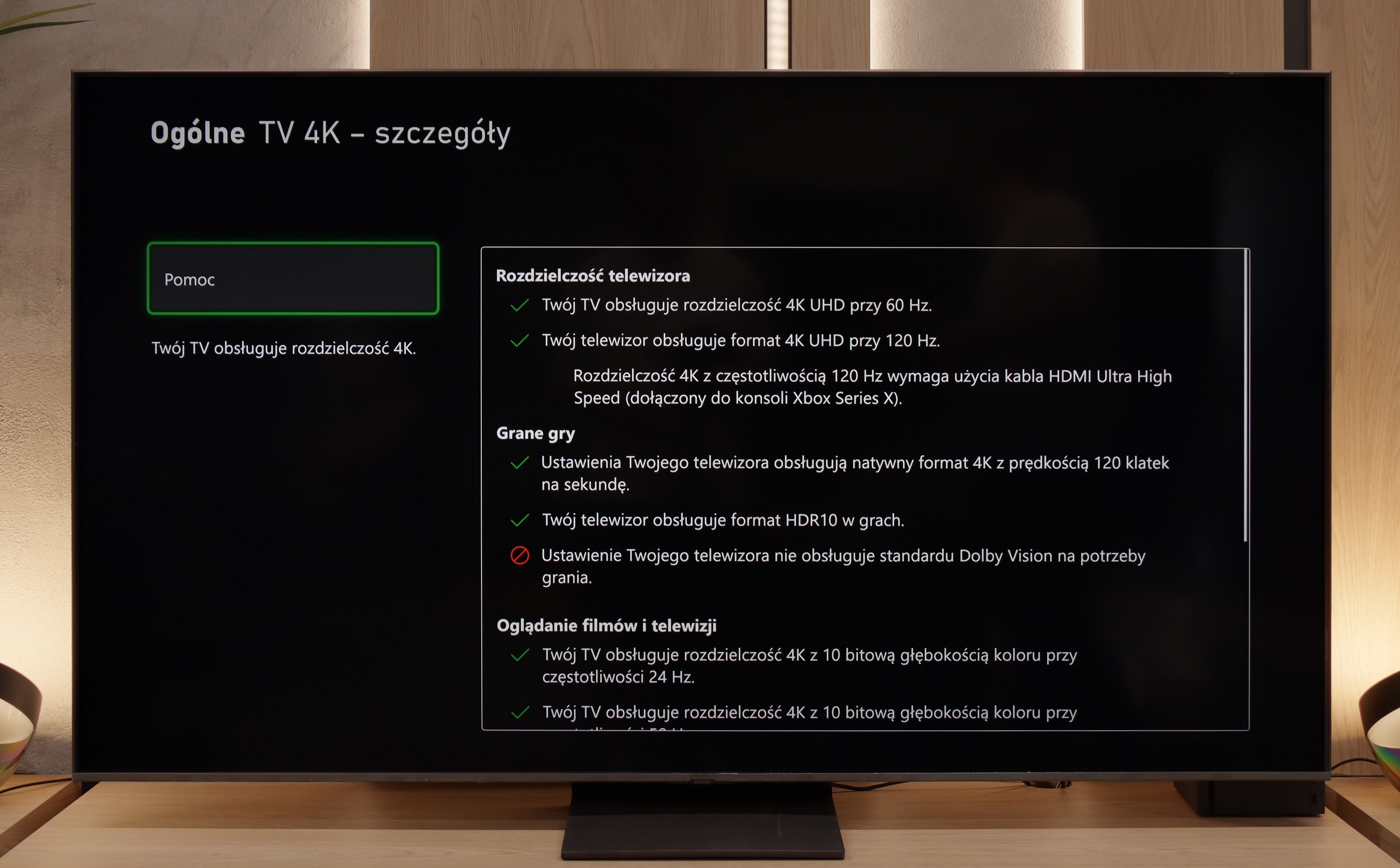

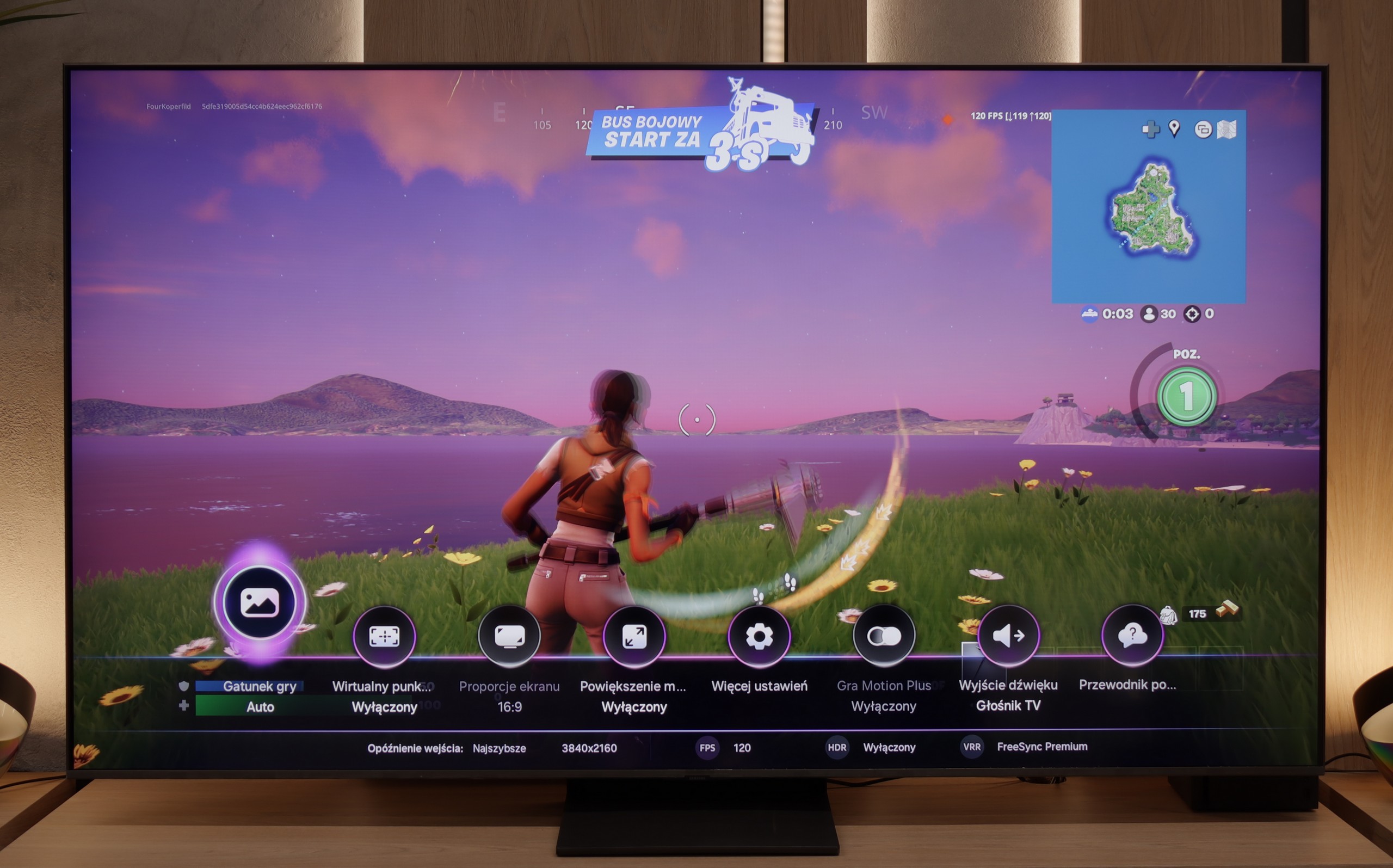

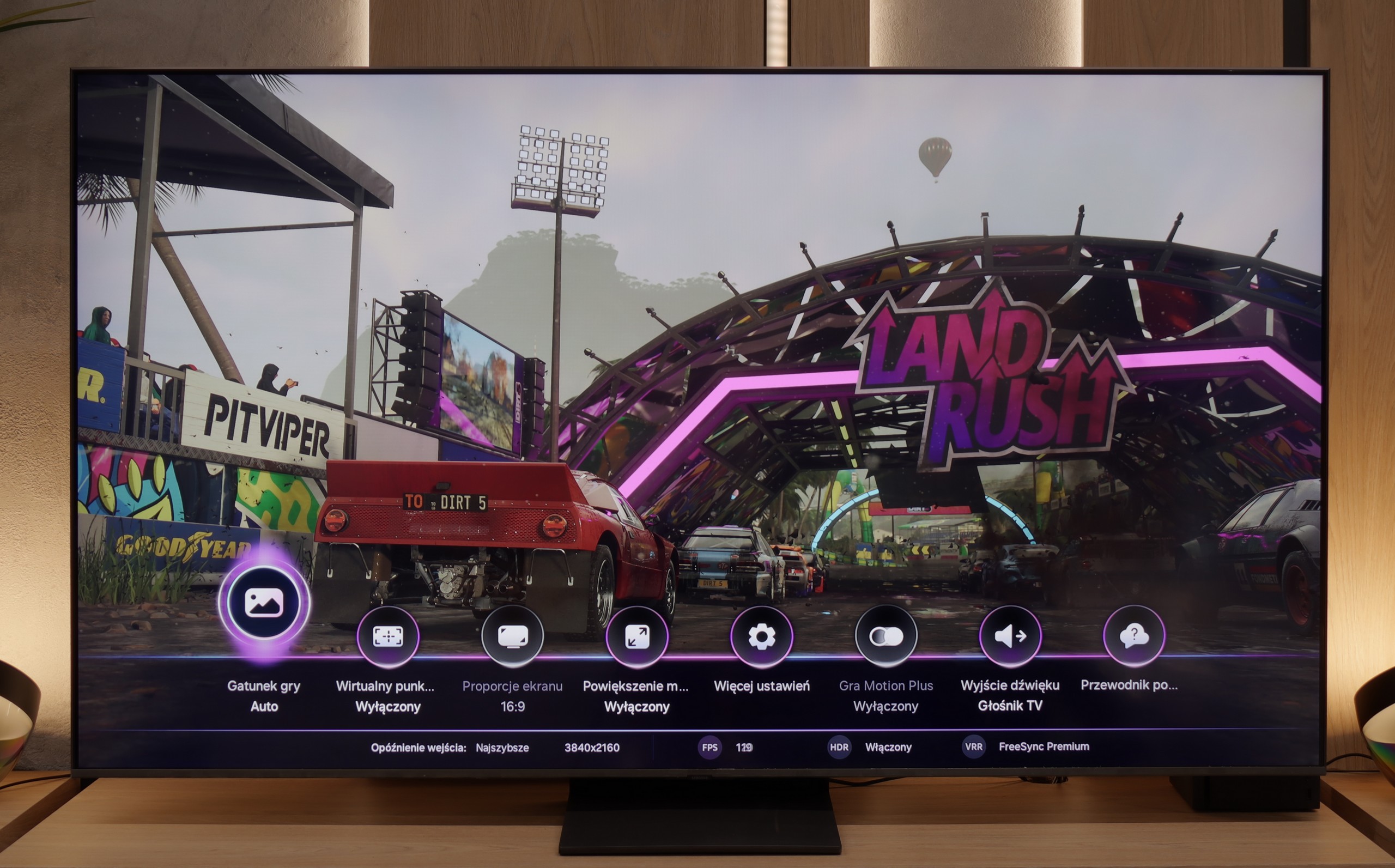
Philips PUS8959 is a television that will surely please gaming enthusiasts. It supports most modern technologies useful during gameplay, such as HGiG, allowing for better representation of HDR effects in games. As a result, the image is more aligned with what the game developers intended to achieve.
The television also supports displaying images at 120 Hz, ensuring smoothness and dynamism, particularly important during action games and sports broadcasts. The Game Bar feature provides quick access to game settings, making it easier to adjust the image according to user preferences without interrupting gameplay.
Unfortunately, the Dolby Vision mode does not offer low input lag, which may be noticeable during dynamic scenes. Nevertheless, thanks to the HGiG feature and high refresh rate, the Philips PUS8959 remains an attractive choice for gamers, offering good image quality and suitable smoothness during gameplay.
Samsung QN80F is a TV that delivers on almost every front when it comes to gaming. We have a 144 Hz panel, four fully-fledged HDMI 2.1 ports, support for gamers in the form of variable refresh rate (VRR), auto low latency mode (ALLM), and even one of the best-designed game bars on the market. The cherry on top is the motion smoother, which – as the only one in the world – works in games without significantly increasing input lag. Sounds like an almost perfect TV for gamers? And indeed, it’s almost that.
As usual, Samsung does not support Dolby Vision in gaming, but that’s no surprise anymore. However, what is much more surprising is that... the HGIG feature has disappeared – which is a system that allows a console (e.g. PlayStation 5 or Xbox Series X) to precisely match HDR tone mapping to the capabilities of the TV. In the latest firmware update for the 2025 models, this option simply vanished. It looks more like a bug than a deliberate move, but it must be honestly noted that as of the writing of this review, the HGIG feature is simply absent.
And it’s this one missing feature that turns the QN80F from an almost perfect gaming TV into a “nearly” perfect device. It’s a pity – because everything else indicated that Samsung could once again set the bar very high in this generation.
Input lag
9.7/10
9.8/10
SDR
HDR
Dolby Vision
Philips PUS8959 TV offers impressive results in terms of input lag, making it a great choice for gamers. For 120 Hz content, the lag is less than 6 ms, which is an absolutely excellent result and allows for immediate response in games, especially in dynamic titles. For 60 Hz content, the input lag is 15 ms, which is also an outstanding result and ensures comfortable gameplay in most cases.
Unfortunately, the Dolby Vision mode does not perform as well, as the input lag increases to 31 ms. While such a result may be acceptable for less dynamic content, for demanding gamers it may prove insufficient, impacting precision and reaction speed. Nonetheless, in standard modes, Philips PUS8959 still offers remarkable performance, making it a competitive choice in the TV market for gamers.
The QN80F doesn't disappoint when it comes to response time. The input lag for 120 Hz content drops below 10 ms, which can be considered an almost perfect result – it's hard to expect more in this class of televisions. Gaming is smooth, responsive, and without delays that could annoy even the most sensitive players. For 60 Hz material, the lag is higher, around 19 ms, but this is a completely natural phenomenon and still falls within comfortable limits.
Compatibility with PC
8/10
8.8/10

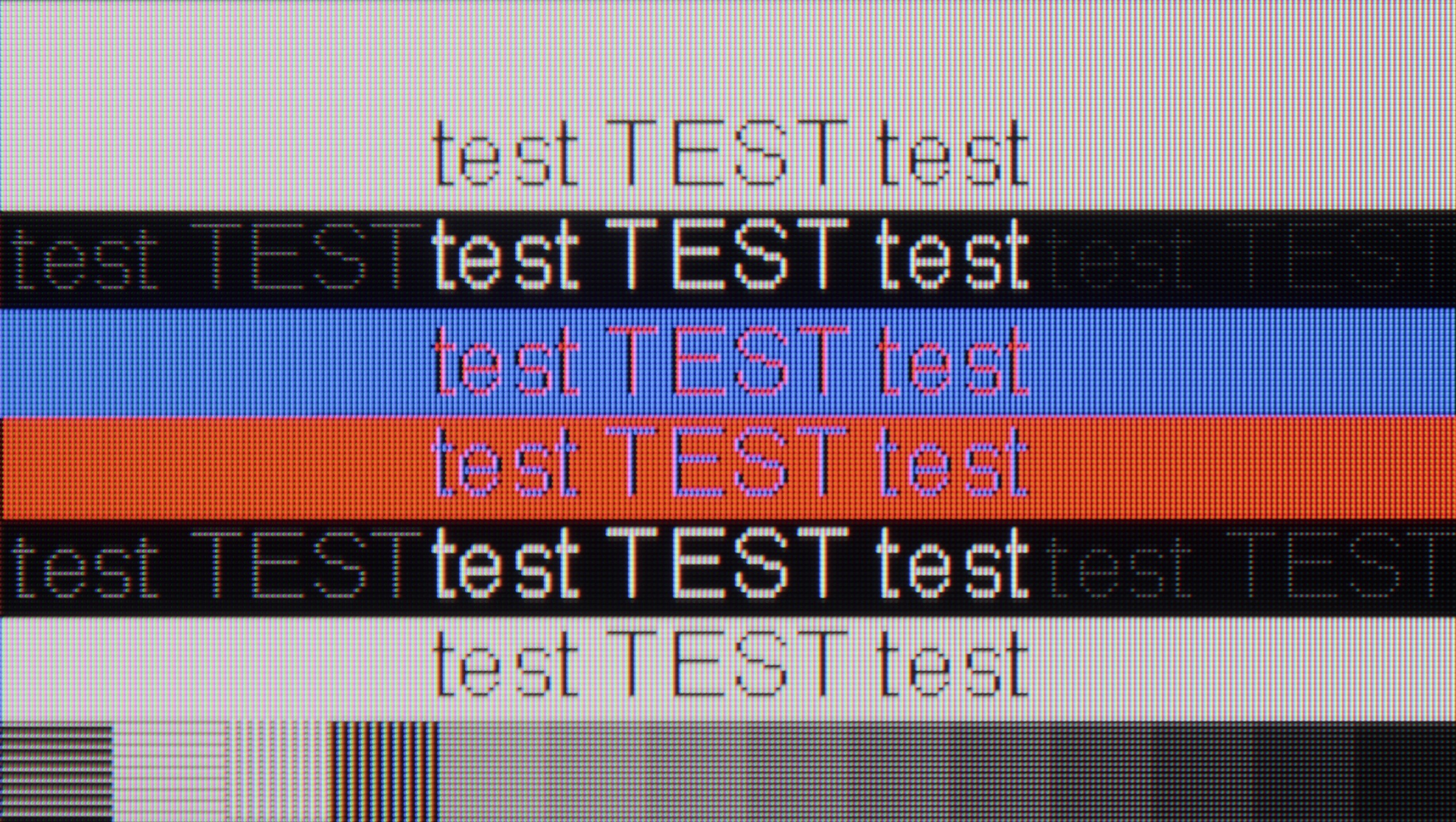
Philips PUS8959 works excellently as a monitor for use with a PC. With support for chroma 4:4:4, it provides full colour clarity, which is crucial for text work – fonts are sharp and readable, regardless of the background they are on. This makes using office applications, browsing the internet, and graphic editing comfortable and precise.
Additionally, the low input lag provided by the television ensures smooth and responsive operation, which is important both during everyday tasks and in more dynamic applications, such as gaming or multimedia editing. Philips PUS8959 is an excellent choice for users looking for a television that also functions as a PC monitor, offering high image quality and user comfort.
Playing on the QN80F with a computer connected is pure delight. The television works seamlessly with NVIDIA graphics cards (thanks to G-Sync support) and AMD (thanks to FreeSync Premium), and the 144 Hz refresh rate only enhances comfort during fast-paced gaming. Everything works right away, without unnecessary fiddling with settings – just as it should.
When it comes to work, it's very good as well. The readability of fonts is high, and texts look sharp and clear. With very thin horizontal lines, you might notice slight imperfections or shadows, but honestly – you have to take a good look. Unless, like us, you sometimes like to examine the screen with a magnifying glass… then you might spot something 😉.
Viewing angles
6.9/10
3.1/10
Philips PUS8959, equipped with an ADS panel, offers quite decent viewing angles, definitely better than those found in VA panels. The image retains its quality even when viewing from a wider angle – colours are vivid, and contrast does not deteriorate as much as in VA panel televisions. Because of this, watching the television from different spots in the room still allows for enjoyment of well-saturated colours and overall image quality, which makes Philips PUS8959 perfect for larger rooms and during shared viewing with family or friends.
QN80F, like most TVs with a VA panel, isn't impressive in terms of viewing angles. Just tilt a bit to the side, and you'll notice a significant drop in brightness and lost colour saturation. The image loses its "depth" and "vividness", and darker scenes may appear slightly washed out. However, this is a typical characteristic of VA panels, which offer significantly better native contrast compared to IPS panels in return. In short: you win some, you lose some. If you're sitting directly in front of the screen – there won't be any issues. But when watching together in a larger group, it's worth keeping this in mind.
TV efficiency during daytime
6.1/10
6.6/10

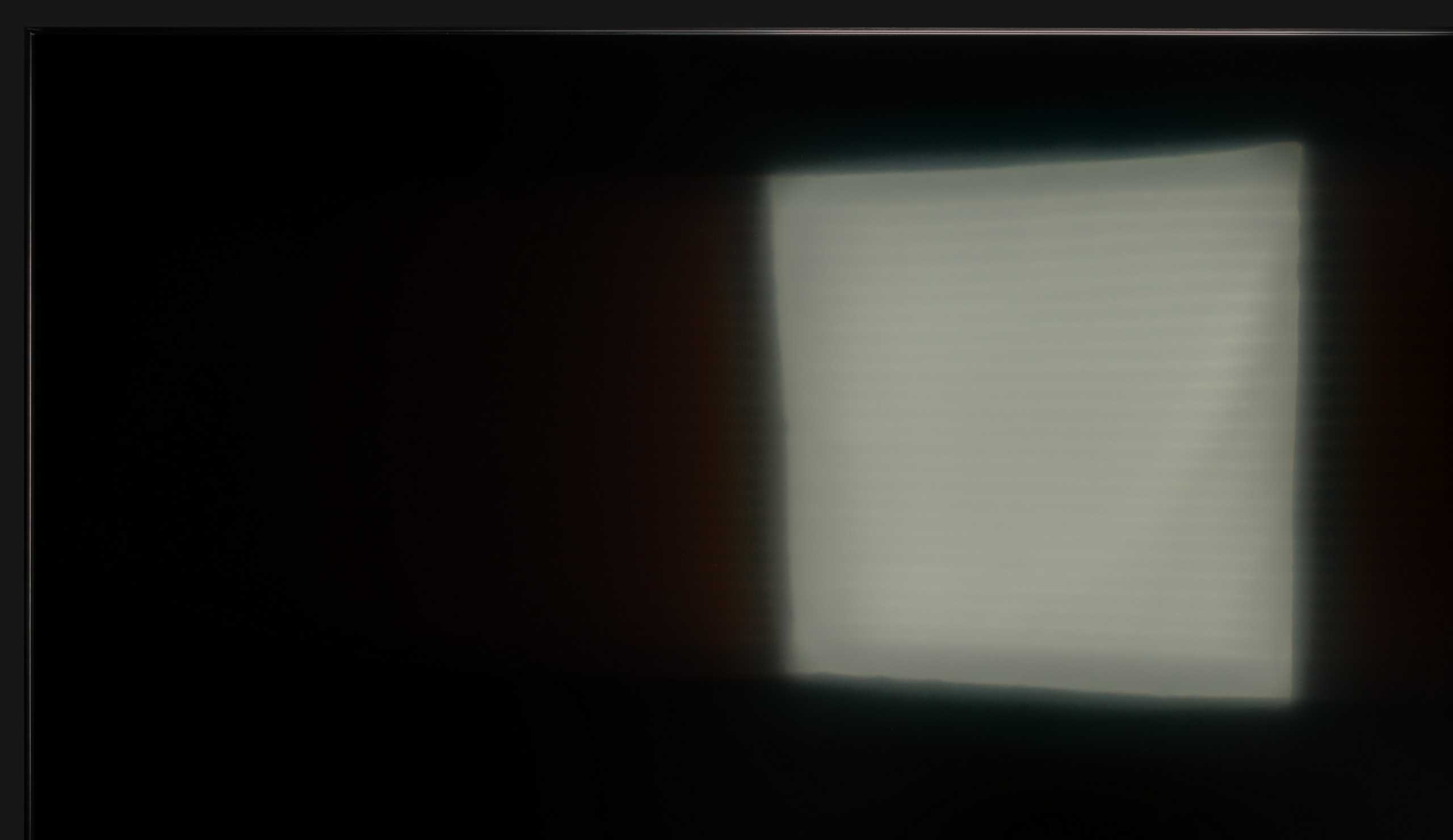

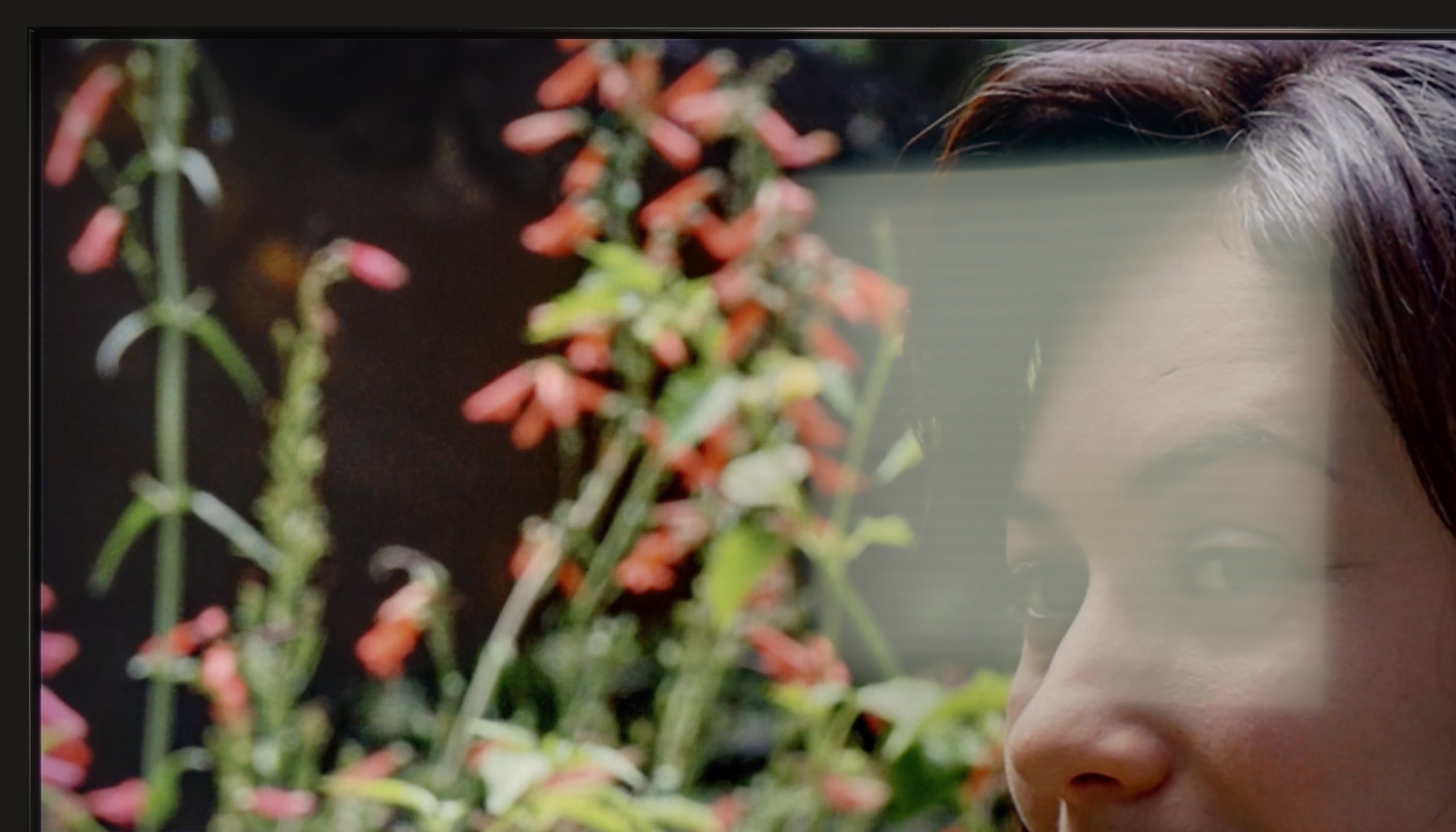
Matrix brightness
Average luminance SDR
SAMSUNG QN80F: 543 cd/m2
Philips The One (PUS8959 / PUS8919 / PUS8909 / PUS8949: 562 cd/m2
Philips PUS8959 features a satin finish on the panel that effectively dampens light reflections, which is beneficial when using the television in bright daytime conditions. However, such a finish causes blacks to take on shades of grey during the day, losing their depth and intensity, which impacts the perception of the image in darker scenes.
A brightness level of 562 cd/m² allows for comfortable television use during the day, even in well-lit rooms. The image is bright enough to cut through daylight, and the reduction of reflections ensures decent visibility of content, making Philips PUS8959 a good choice for rooms where the lighting level cannot always be controlled.
QN80F is really a bright television. The average brightness in SDR material is around 550 nits, regardless of the scene, which practically means that you can comfortably watch content even in a well-lit room – and there’s no need to close the blinds every time we turn on a film. The new satin coating on the panel also deserves praise, as it handles glare much better compared to last year's QN80D. Reflections are less bothersome, and the screen maintains readability in various lighting conditions. It’s hard to nitpick here – the QN80F performs simply brilliantly during the day.
Details about the matrix
Subpixel Structure:

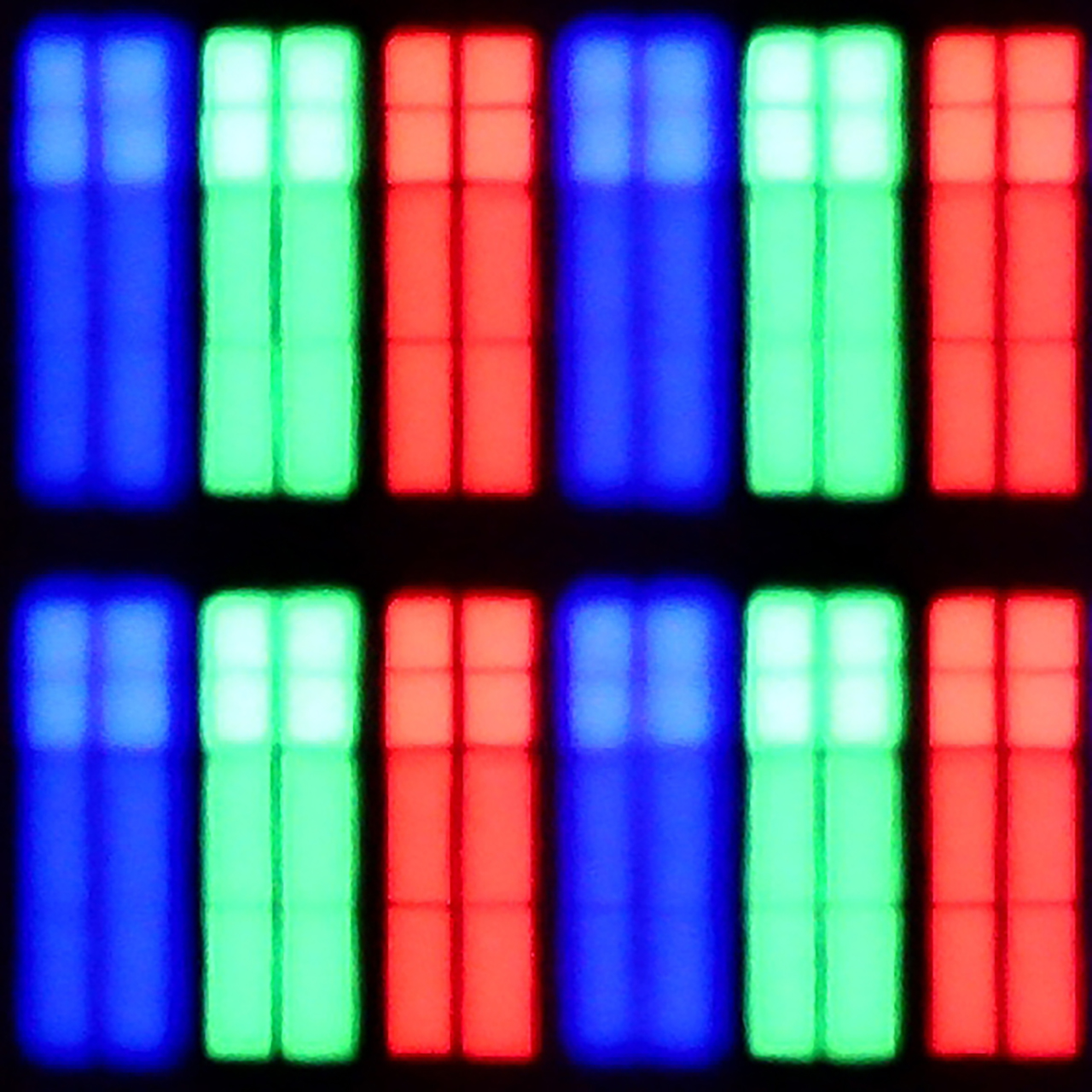
Panel uniformity and thermal imaging:

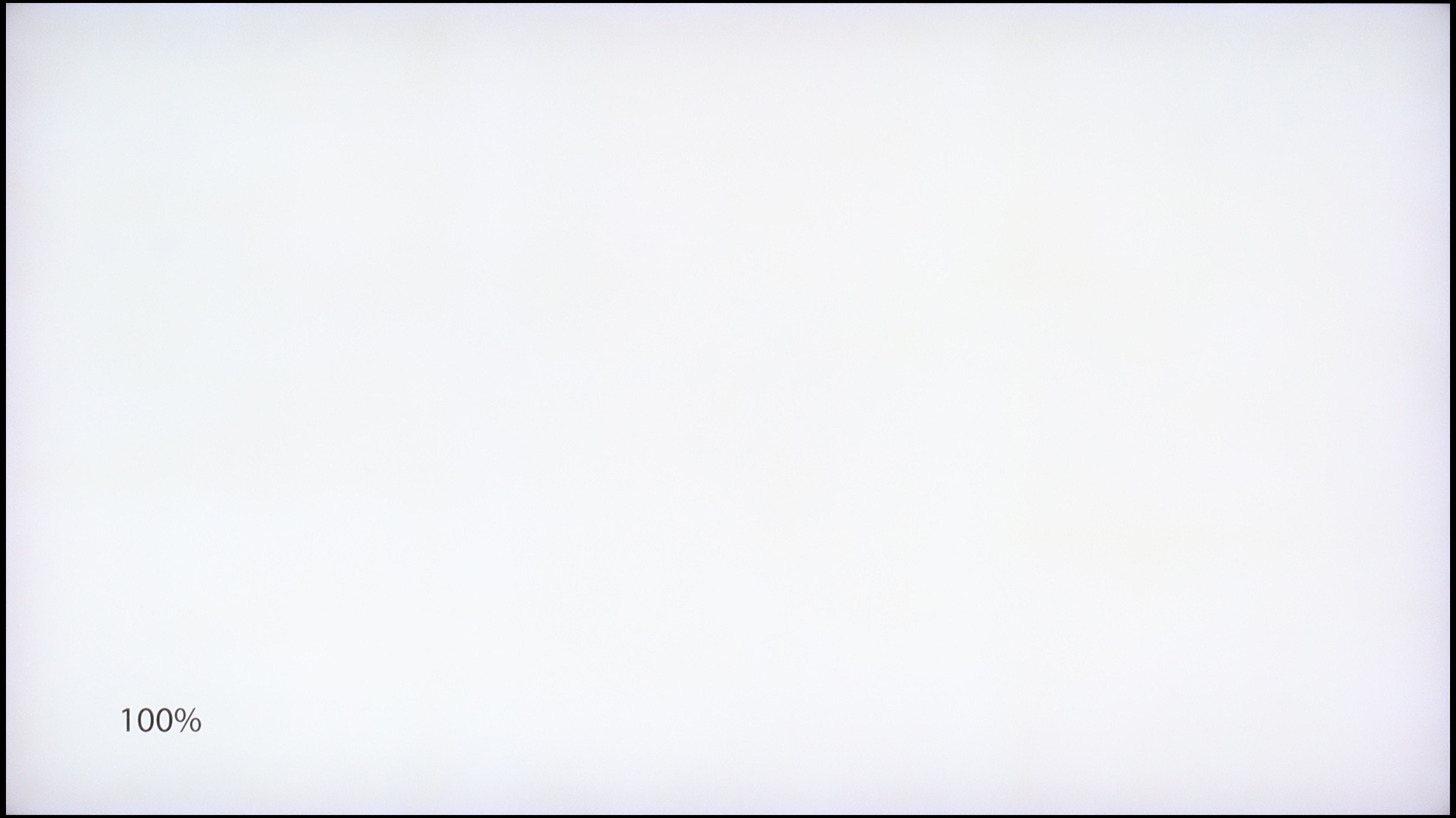
Philips The One (PUS8959 / PUS8919 / PUS8909 / PUS8949
SAMSUNG QN80F
TV features
6.1/10
7.7/10
- HDMI inputs0 x HDMI 2.0, 0 x HDMI 2.1 48Gbps0 x HDMI 2.0, 4 x HDMI 2.1 48Gbps
- OutputsToslink (Optical audio), eARC (HDMI), ARC (HDMI), Mini-Jack (Headphones)Toslink (Optical audio), eARC (HDMI), ARC (HDMI)
- Network InterfacesWi-Fi 2.4GHz, Wi-Fi 5GHz, Ethernet (LAN) 100MbpsWi-Fi 2.4GHz, Wi-Fi 5GHz, Ethernet (LAN) 100Mbps
- TV receptionDVB-T, DVB-T2, DVB-S, DVB-S2, DVB-CDVB-T, DVB-T2, DVB-S, DVB-S2, DVB-C
Classic features:
- Recording to USB (terrestrial TV)
- Recording programming
- Picture in Picture (PiP)
- RF remote control (no need to aim at the screen)
- Backlit remote control
- Teletext
- Audio only mode
- Bluetooth headphones support
- Simultaneous Bluetooth headphones & TV audio
Smart features:
- AirPlay
- Screen mirroring (Windows Miracast)
- Voice search
- Voice search in native language
- Ability to connect a keyboard and mouse



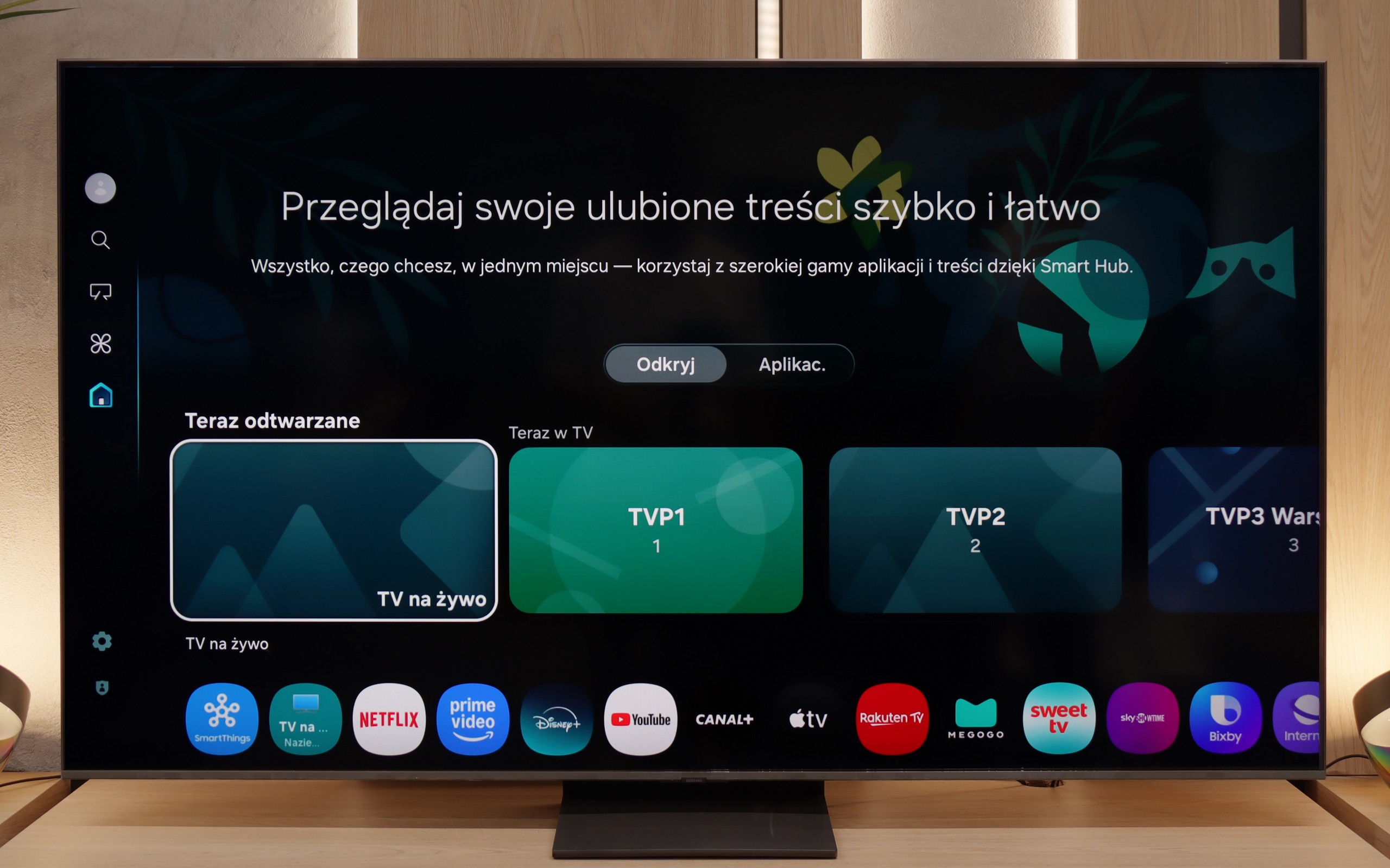
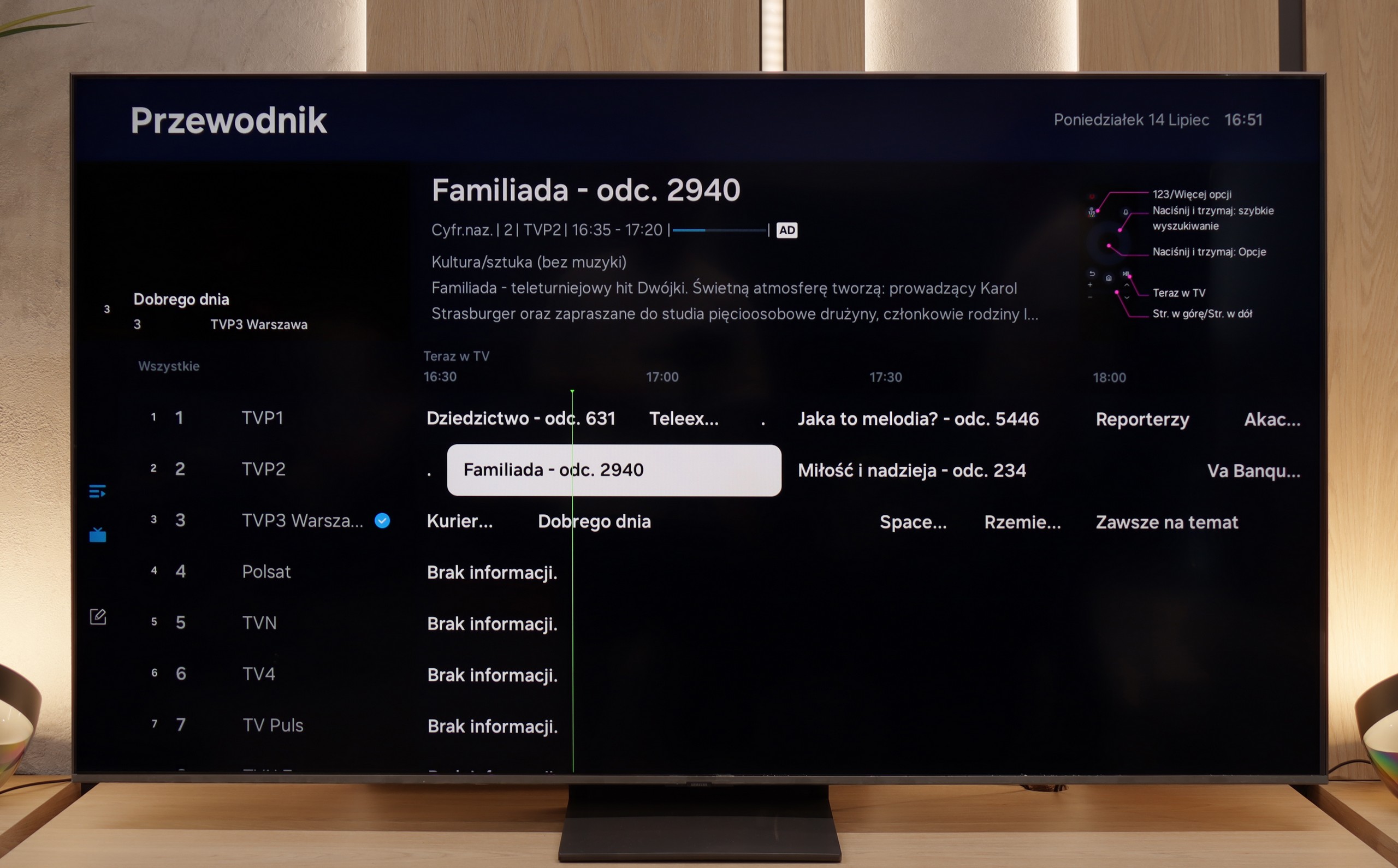
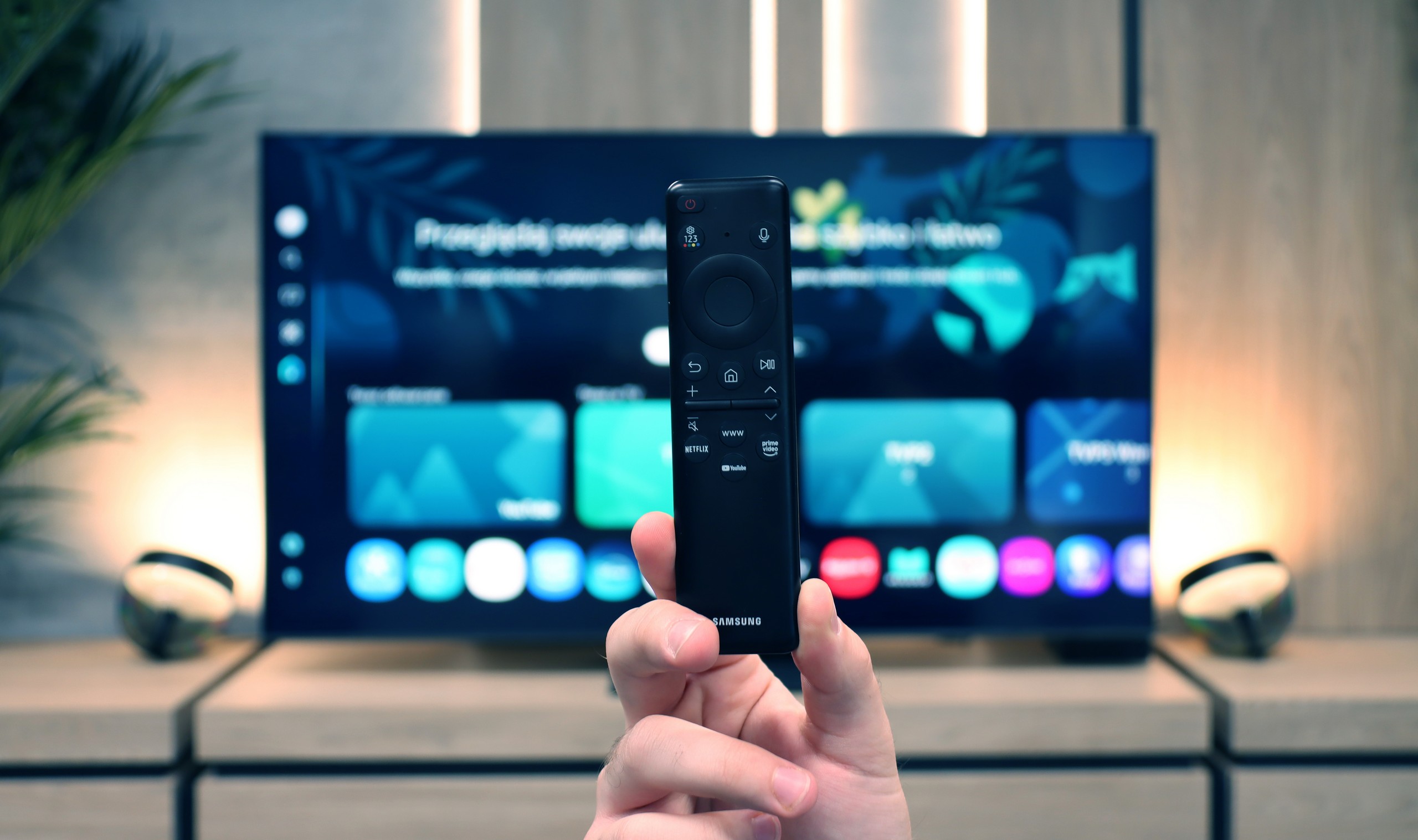
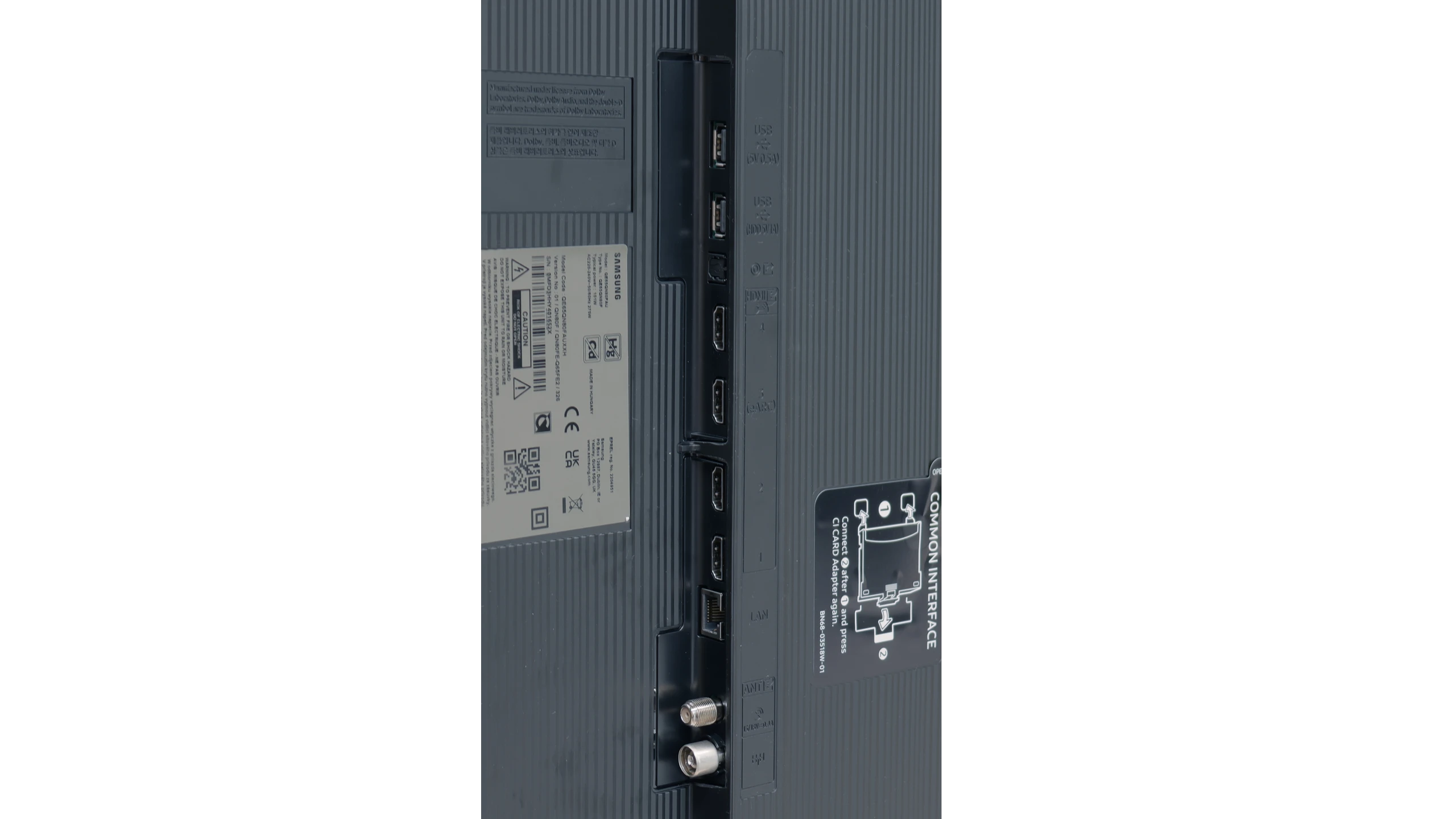
Philips PUS8959 is equipped with a three-sided Ambilight system – a flagship patent of this brand, which has been enjoyed by a dedicated group of fans for years. Ambilight is based on dynamic lighting of the wall behind the television, adapting to the content displayed on the screen, significantly enhancing the viewing experience, especially in a darkened room. This effect is unique and adds a certain kind of "magic" to watching, making many users choose Philips specifically for this feature.
When it comes to the operating system, Philips PUS8959 uses Titan OS – a system that is still in the early stages of development. There are visible growing pains, especially since Philips has moved away from Android in most of its models. Titan OS has a limited number of available applications. This is frustrating for those accustomed to a broader ecosystem like GoogleTV. Additionally, the television does not have AirPlay functionality, which limits its compatibility with Apple devices and may be a drawback for users looking for a flexible way to stream content.
The user features of Philips PUS8959 are a mix of pros and cons. The remote control that comes with the television is quite annoying – it requires aiming directly at the screen, which can be inconvenient. On the other hand, the voice function works without the need to aim, but it only supports English. On the plus side, the remote is backlit, making it easier to use in the dark. The television lacks PiP (Picture-in-Picture) functionality and the ability to record programs, which is a significant omission. However, the television is equipped with Bluetooth, allowing users to connect headphones or a keyboard, which can be useful – especially given the limited number of available applications, which may encourage the use of the built-in web browser.
SmartTV QN80F: Tizen
When it comes to smart features, the QN80F has nothing to be ashamed of. On the contrary – Tizen is one of the richest operating systems in terms of functionality. We have voice search, AirPlay support, Miracast and all the major streaming platforms at our fingertips. But Samsung's real advantage reveals itself in the smart home – SmartThings. Not only can you sync light bulbs and vacuum robots, but you can also integrate devices from other manufacturers, thanks to support for the Matter standard. And suddenly it turns out that the QN80F can serve as a home command centre. There is just one "but" – Tizen is a closed system, so we might not find a few lesser-known apps. However, in practice, it still has everything that 99% of users need.
Classic TV features:
When it comes to classic features, it’s just as good – well, almost. The QN80F supports Picture-in-Picture, a rare but still useful PiP feature. We'll easily find EPG, the good old teletext (yes, it works!) and the ability to connect external devices via Bluetooth – whether it's headphones or a soundbar. Unfortunately, it lacks the option to record to USB from the built-in tuners. This is a small annoyance, especially since competitors in a similar price range are increasingly offering this feature. It may not be a must-have function, but since everything else works so well, it’s a shame it's missing that finishing touch.
Playing files from USB
8.2/10
9/10
Supported photo formats:
Maximum photo resolution:

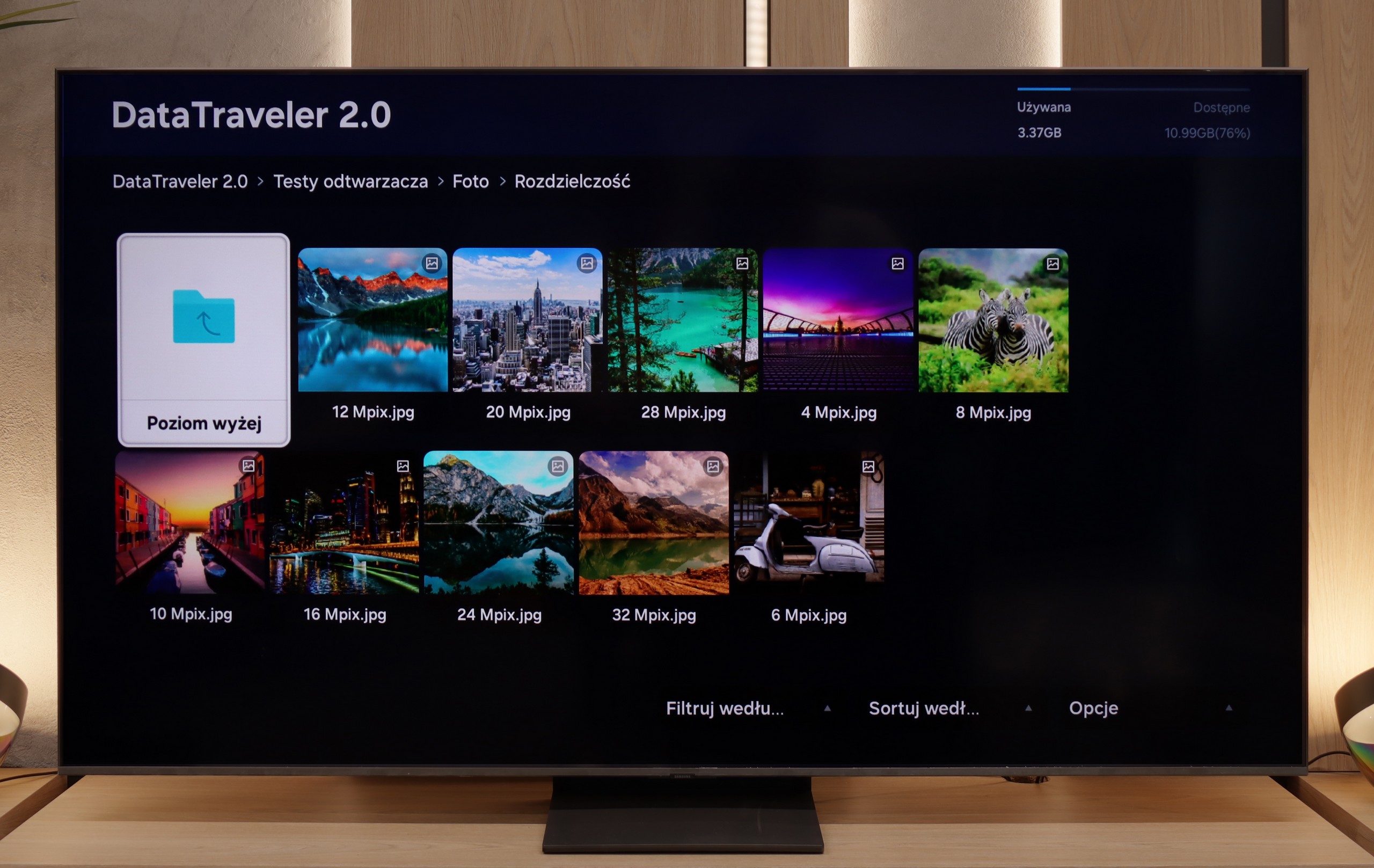
Although the Titan OS system on the Philips PUS8959 TV is still in its early stages, it deserves praise for supporting Polish subtitles embedded in films, which is a significant convenience for users dealing with external files. If we want to play a film from a connected USB device, the TV will do this without any major issues, providing a comfortable viewing experience without the need for additional subtitle configuration.
As for photos, the TV should have no major difficulties playing them. It supports most popular formats, although there is a lack of support for less common standards, such as HEIC used in Apple devices. This means that some photos, especially from newer Apple devices, may require prior conversion to a more standard format in order to be played on the Philips screen.
The built-in media player in the QN80F handles most popular video formats – from classic MP4 to more demanding containers. It may not be as versatile as VLC, but for home use, it’s more than sufficient. The situation is worse with photos – here, unfortunately, it’s quite limited. Support mainly includes the JPG format, but hey, at least that’s the most important one 👌. During our tests, there was also a minor issue with subtitles. The QN80F only handled the simple text format .txt – unfortunately, other, more advanced formats (like .srt or .sub) were not recognized.
Apps
6.2/10
8.7/10














































Sound
6.4/10
6.7/10
- Maximum volume-87dB
- Dolby Digital Plus 7.1
- Dolby True HD 7.1
- Dolby Atmos in Dolby Digital Plus (JOC)
- Dolby Atmos in Dolby True HD
- DTS:X in DTS-HD MA
- DTS-HD Master Audio
The sound on the Philips PUS8959 unfortunately leaves a lot to be desired. While you can hear low frequencies in the playback, the bass is very weak, which results in overall unsatisfactory sound quality. The television performs averagely, especially when compared to more advanced sound systems available on the market.
Despite the average quality of the speakers, the television supports all essential audio codecs, which may please users utilizing external home theatre systems. Thanks to compatibility with various audio formats, the Philips PUS8959 can offer a good audio experience when connected to the right external speakers or amplifier, providing a fuller, more cinematic sound.
For a TV of this class, the QN80F sounds surprisingly good. It supports the Dolby Atmos format, which is worth noting as this is still not obvious in many models in this range. Unlike the thinner QN70F, here you can even feel a slight bass – all thanks to the thicker casing, which simply provides more space for the sound to "breathe". It's perfectly adequate for everyday viewing and series, and with the right settings, you could even consider listening to music without the need to connect external equipment. But – as is the case with Samsung, there is unfortunately a lack of support for the DTS:X format, so if we are using audio devices that support this format, we will first need to connect them to the amplifier and only then to the TV.
Acoustic Measurements
No acoustic data
87dBC (Max)
75dBC


